Pepper Plants
Our plants typically are offered in a few different pot/plug sizes depending on the type of plant and availability (typical pot sizes are listed with each plant). The typical pot size offered is listed with each plant. Bear in mind that although a large plant may look impressive, small plants tend to transplant better. Small plants are less root-bound and have less roots overall to disturb. They adapt more quickly and are less prone to shock.
- 4 inch pot - The most common pot size we offer for tomatoes, peppers, flowers, and herbs.
- 3 inch pot - We typically offer succulents and other miscellaneous plants in this size.
- 6 inch pot - We occasionally offer larger-size plants in these pots.
- 72-cell or 6-pack size - Veggies and some annual flowers are often offered at this size.
- 98-cell - Onion starts are offered in this size which is slightly smaller than 6-pack size.
- Peat pot - Melons and squash are offered in peat pots because of their sensitive roots. Plant the entire pot in the ground to avoid harming the roots; the roots will grow right through the peat. These pots are about the size of a 3 inch pot.
- 12 inch hanging basket - Large flowers are offered in these pots.
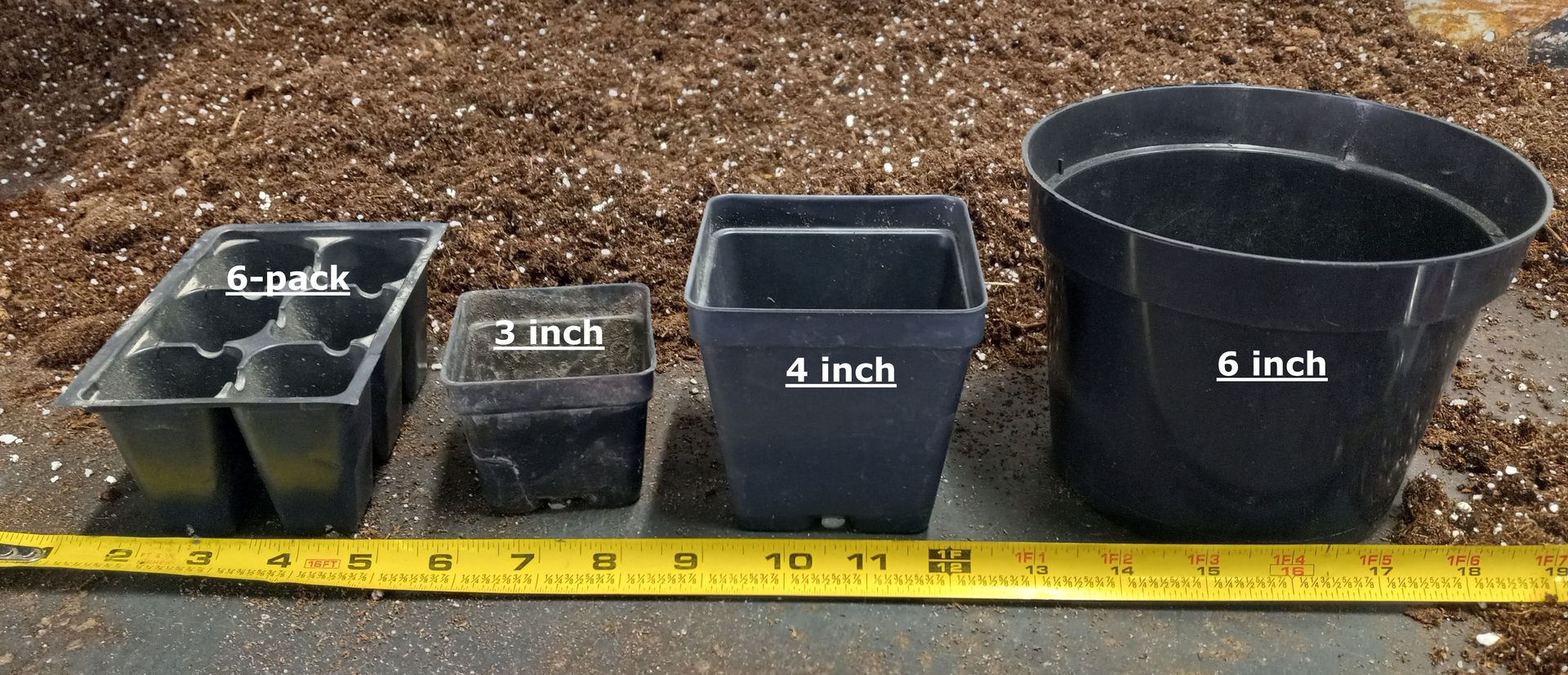
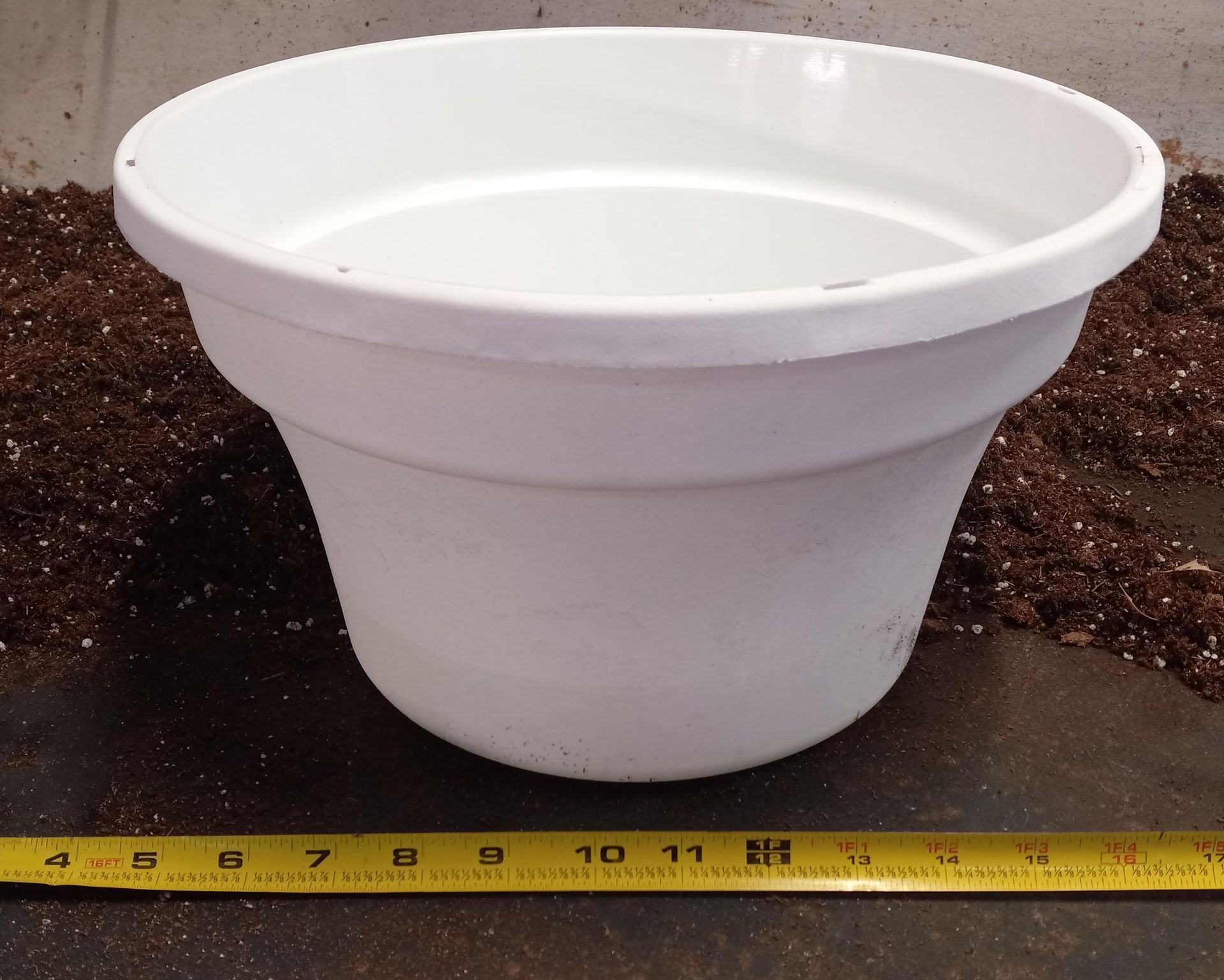
- Ripeness - Peppers can be harvested in two states: unripe and ripe. Unripe peppers tend to be green or pale yellow and have a stronger pepper taste. Ripe peppers typically turn deep yellow, orange, or red. Sweet varieties will typically become sweeter when ripe. Hot varieties will typically become hotter when ripe.
- Extra heat - Hot peppers tend to be hotter when subjected to stress. During periods of hot dry weather your hot peppers will likely have a bit more kick to them!
- Bacterial Leaf Spot - Peppers tend to be very susceptible to a disease known as bacterial leaf spot. The high humidity and moisture typical of Iowa summers is favorable to this disease, making it particularly problematic for pepper growers here. Stopping the spread is the most accessible means of dealing with bacterial leaf spot. In particular, avoid working with your plants when they are damp with morning dew or rain, prevent plants from becoming wet when possible, prevent leaves from contacting (potentially infected) soil, and plant your pepper patch in a different location each year.

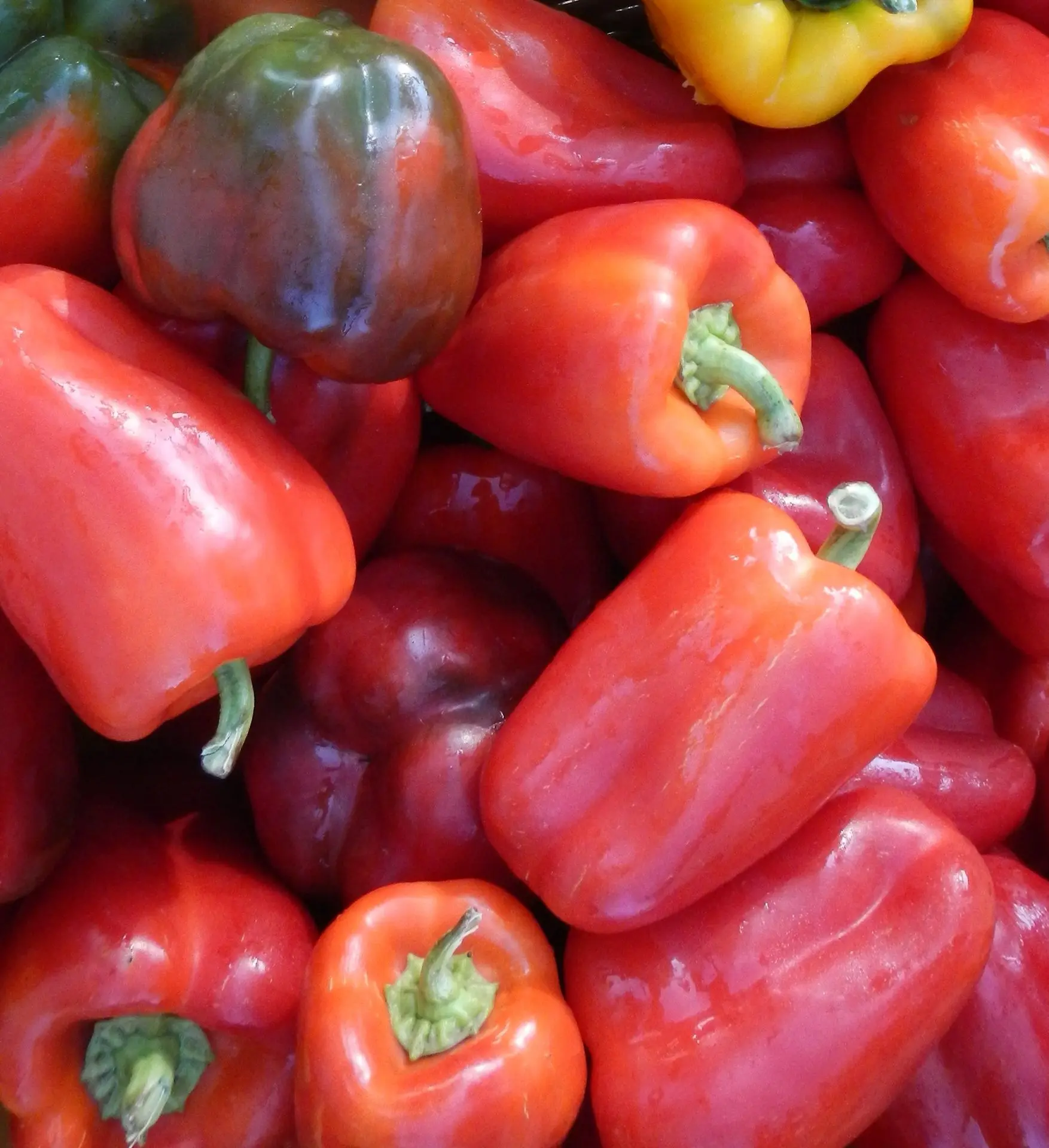
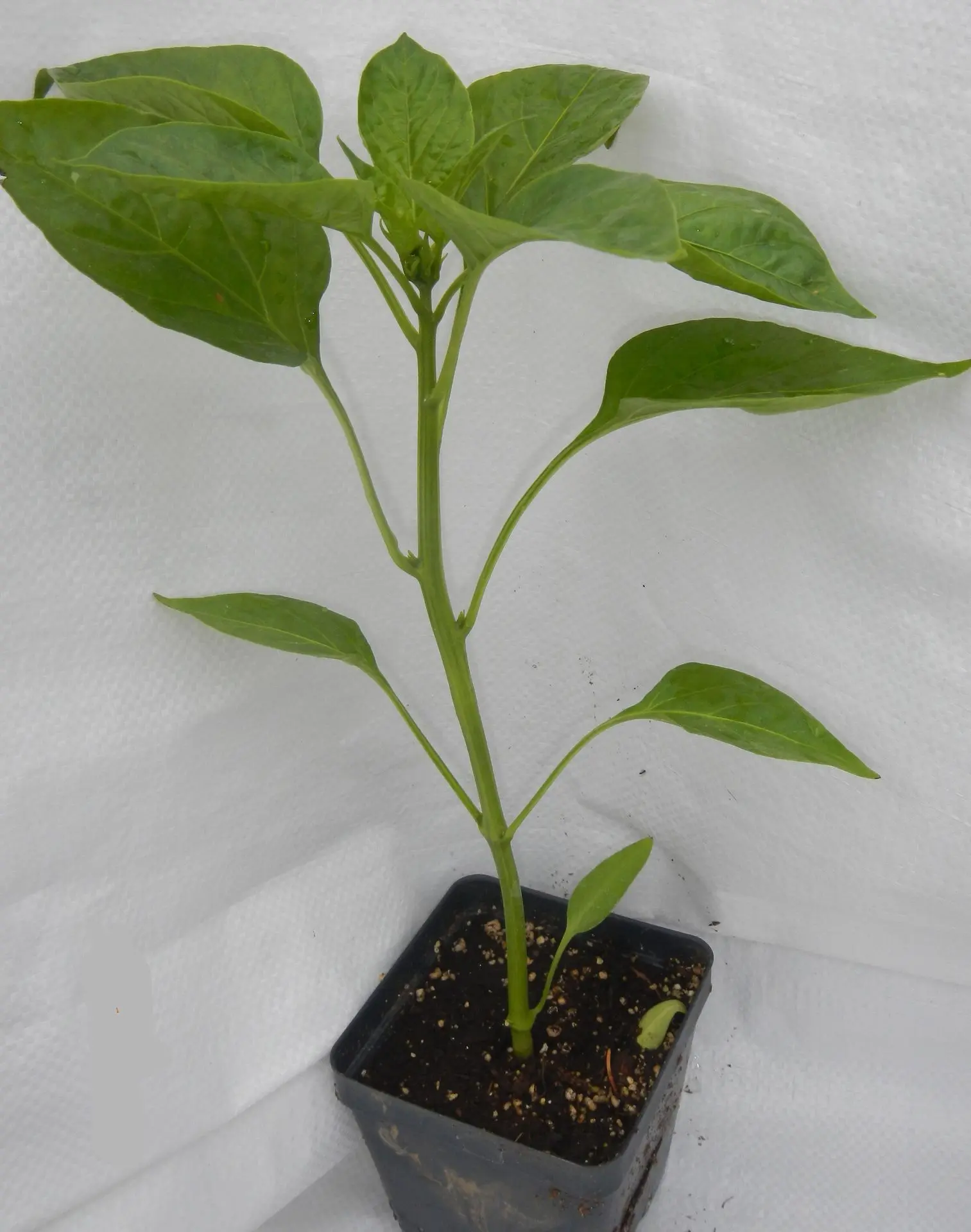
Ace produces large yields of sweet, medium sized, green to red fruit. We have found that this variety consistently sets fruit very well in Iowa so it is a variety that we grow for our own production.
Available during May in a 4" pot. Plant outdoors after danger of frost has passed (May 15).
Light: Full Sun |
Fruit Size/Shape: Medium Bell |
Color: Green to Red |
Maturity: 50 days green, 70 days red |
Flavor: Sweet |
Ace produces large yields of sweet, medium sized, green to red fruit. We have found that this variety consistently sets fruit very well in Iowa so it is a variety that we grow for our own production.
Available during May in a 4" pot. Plant outdoors after danger of frost has passed (May 15).
Light: Full Sun |
Fruit Size/Shape: Medium Bell |
Color: Green to Red |
Maturity: 50 days green, 70 days red |
Flavor: Sweet |
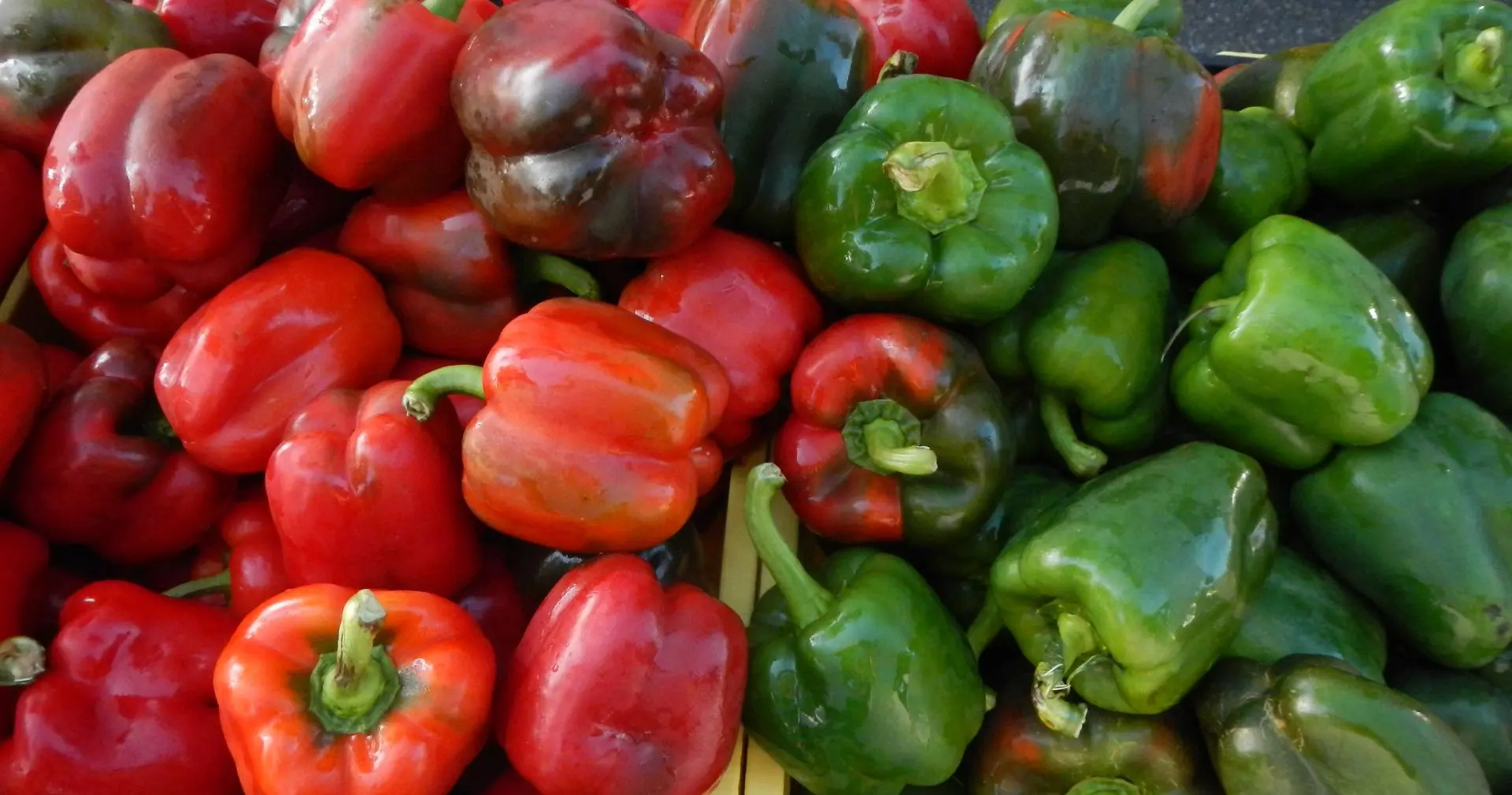


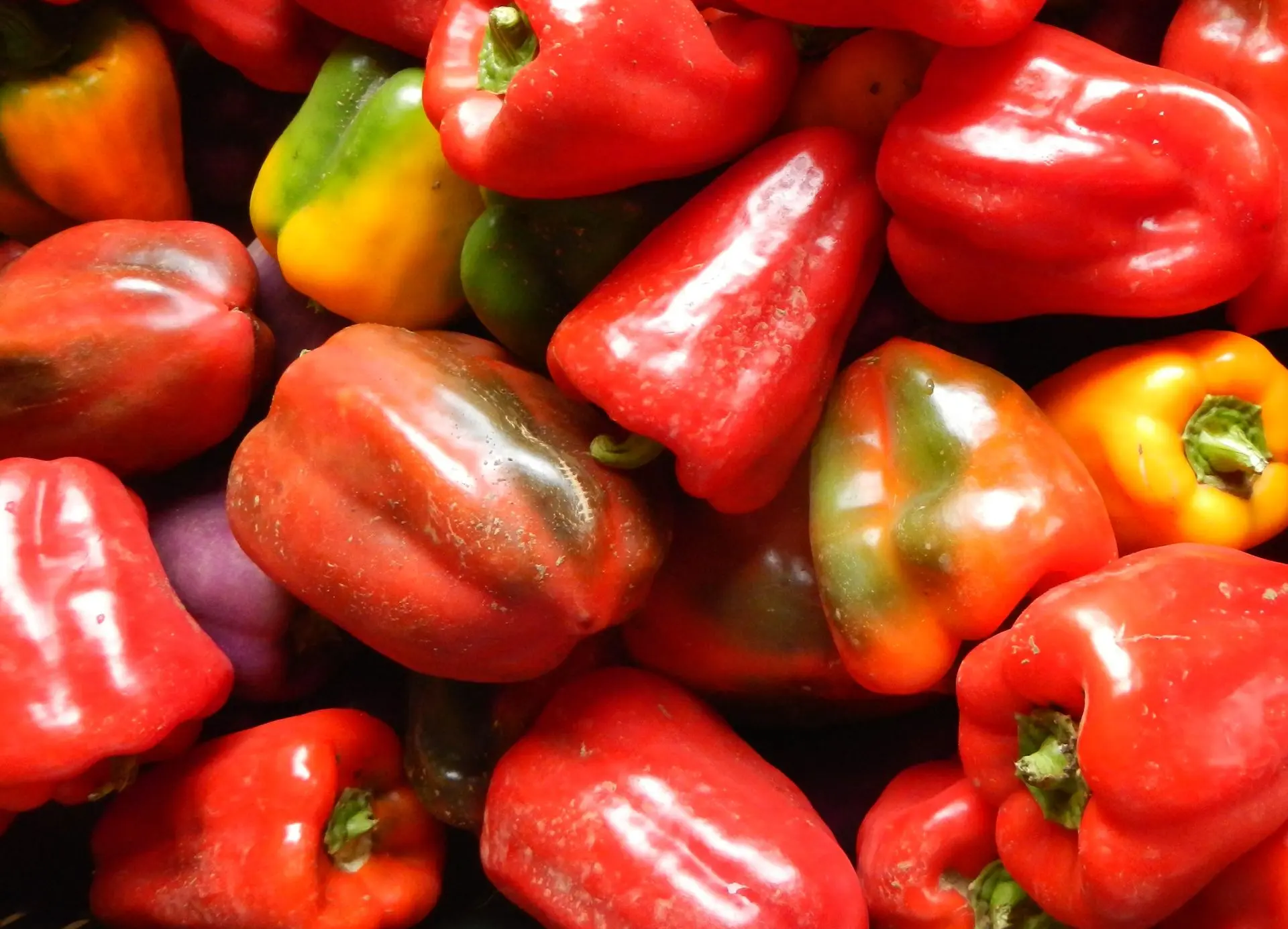

This is a large, sweet, blocky, green to red variety that we grow for our own production.
Available during May in a 4" pot. Plant outdoors after danger of frost has passed (May 15).
Light: Full Sun |
Fruit Size/Shape: Large Blocky Bell |
Color: Green to Red |
Maturity: 71 days red |
Flavor: Sweet |
This is a large, sweet, blocky, green to red variety that we grow for our own production.
Available during May in a 4" pot. Plant outdoors after danger of frost has passed (May 15).
Light: Full Sun |
Fruit Size/Shape: Large Blocky Bell |
Color: Green to Red |
Maturity: 71 days red |
Flavor: Sweet |
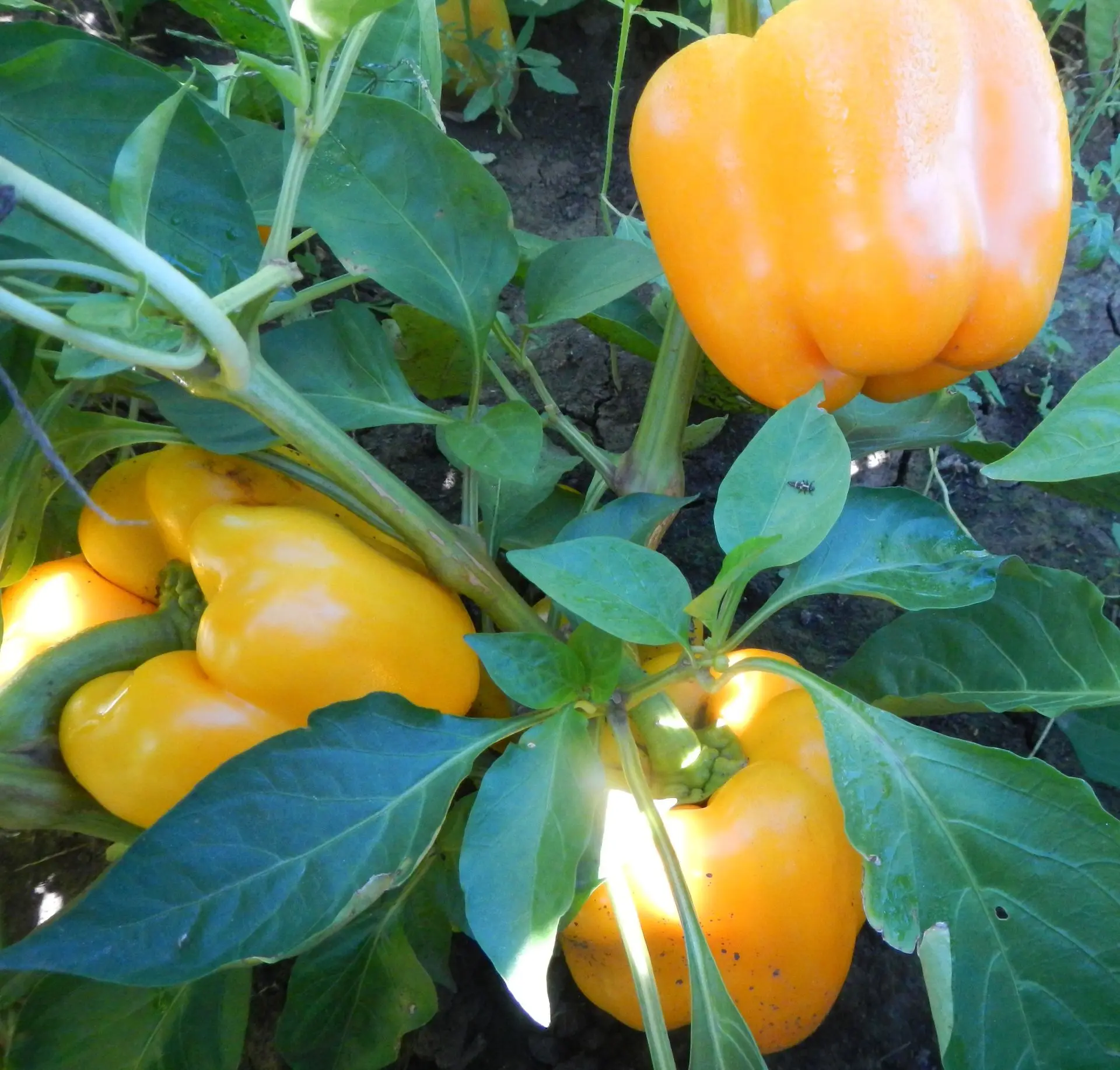
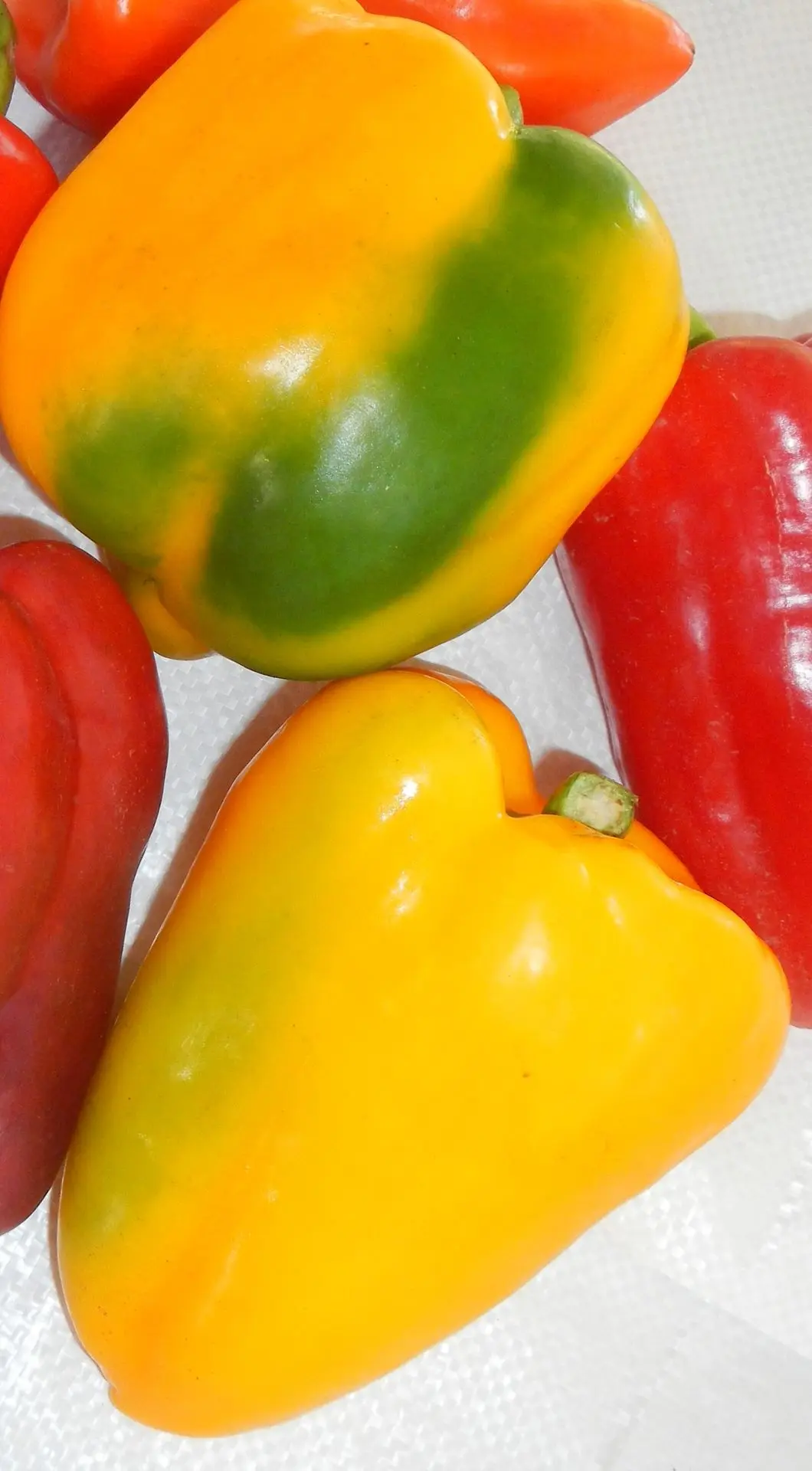


This is a large, sweet, blocky, green to yellow variety. A variety that we grow for our own production.
Available during May in a 4" pot. Plant outdoors after danger of frost has passed (May 15).
Light: Full Sun |
Fruit Size/Shape: Large Blocky Bell |
Color: Green to Yellow |
Maturity: 75 days yellow |
Flavor: Sweet |
This is a large, sweet, blocky, green to yellow variety. A variety that we grow for our own production.
Available during May in a 4" pot. Plant outdoors after danger of frost has passed (May 15).
Light: Full Sun |
Fruit Size/Shape: Large Blocky Bell |
Color: Green to Yellow |
Maturity: 75 days yellow |
Flavor: Sweet |
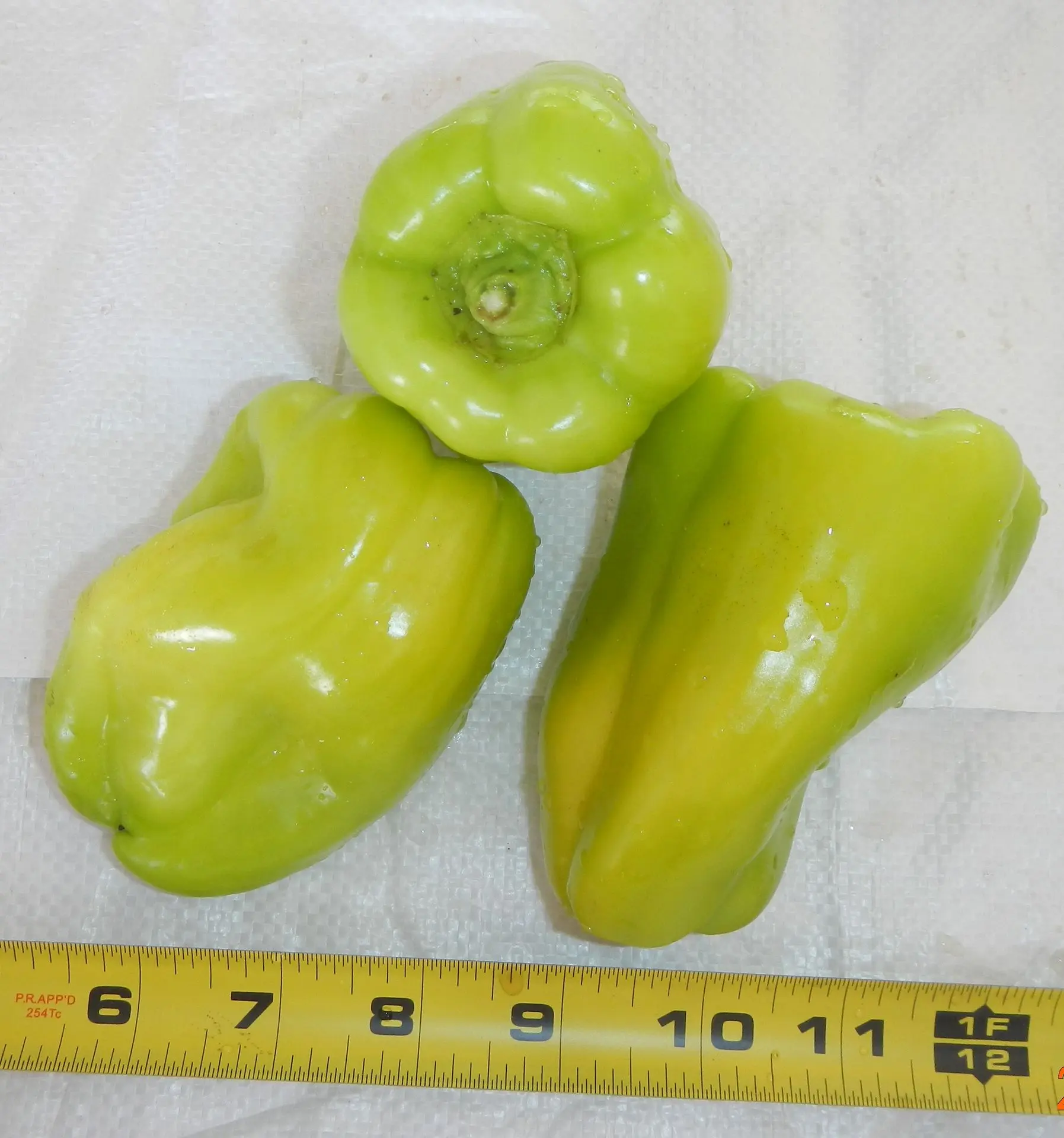
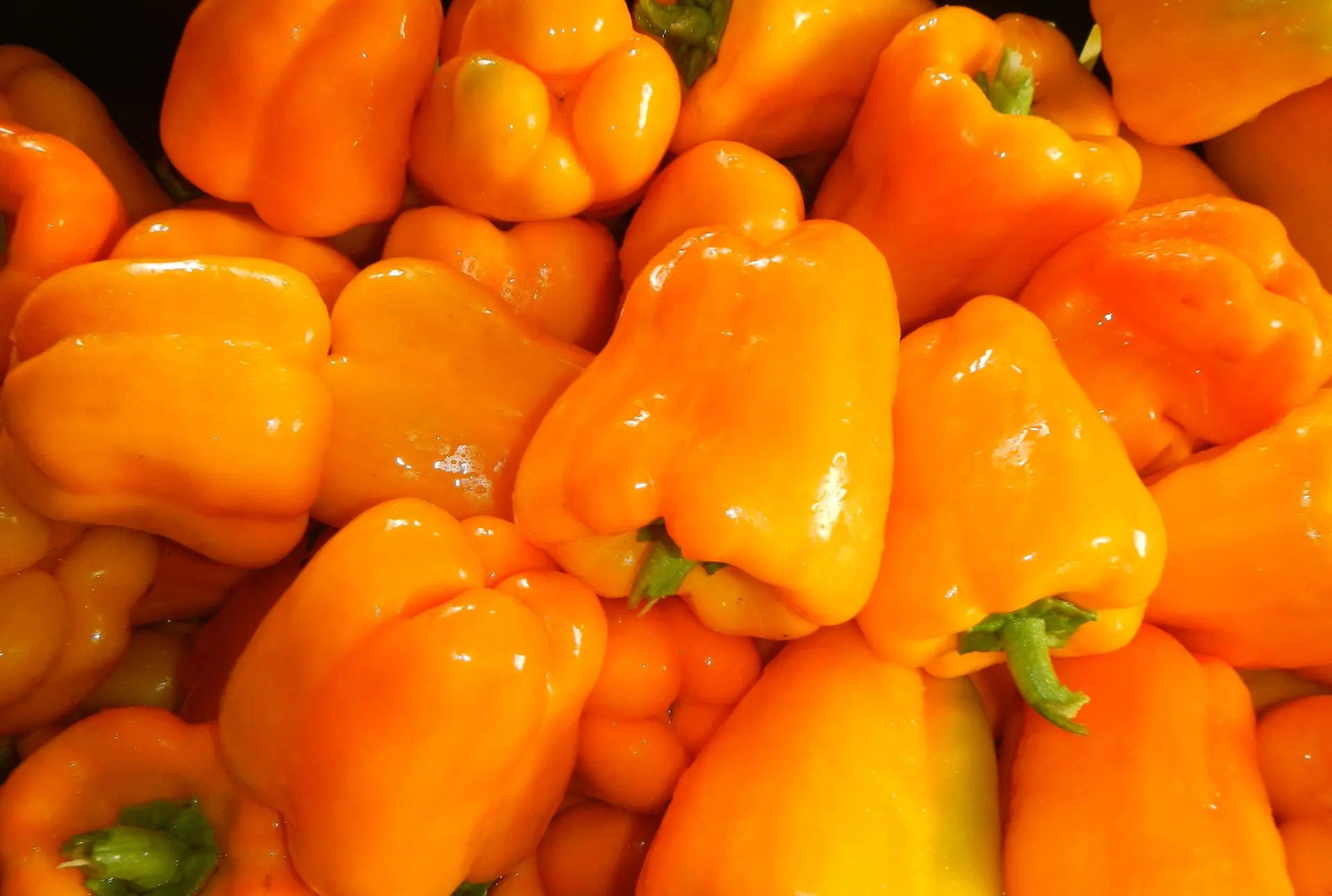


Flavorburst produces very large, lime to deep yellow peppers with excellent flavor similar to a typical green/red bell. They are very productive and do well in Iowa. A variety that we grow for our own production.
Available during May in a 4" pot. Plant outdoors after danger of frost has passed (May 15).
Light: Full Sun |
Fruit Size/Shape: Large Bell |
Color: Lime to Yellow |
Maturity: 67 days lime, 87 days yellow |
Flavor: Sweet |
Flavorburst produces very large, lime to deep yellow peppers with excellent flavor similar to a typical green/red bell. They are very productive and do well in Iowa. A variety that we grow for our own production.
Available during May in a 4" pot. Plant outdoors after danger of frost has passed (May 15).
Light: Full Sun |
Fruit Size/Shape: Large Bell |
Color: Lime to Yellow |
Maturity: 67 days lime, 87 days yellow |
Flavor: Sweet |

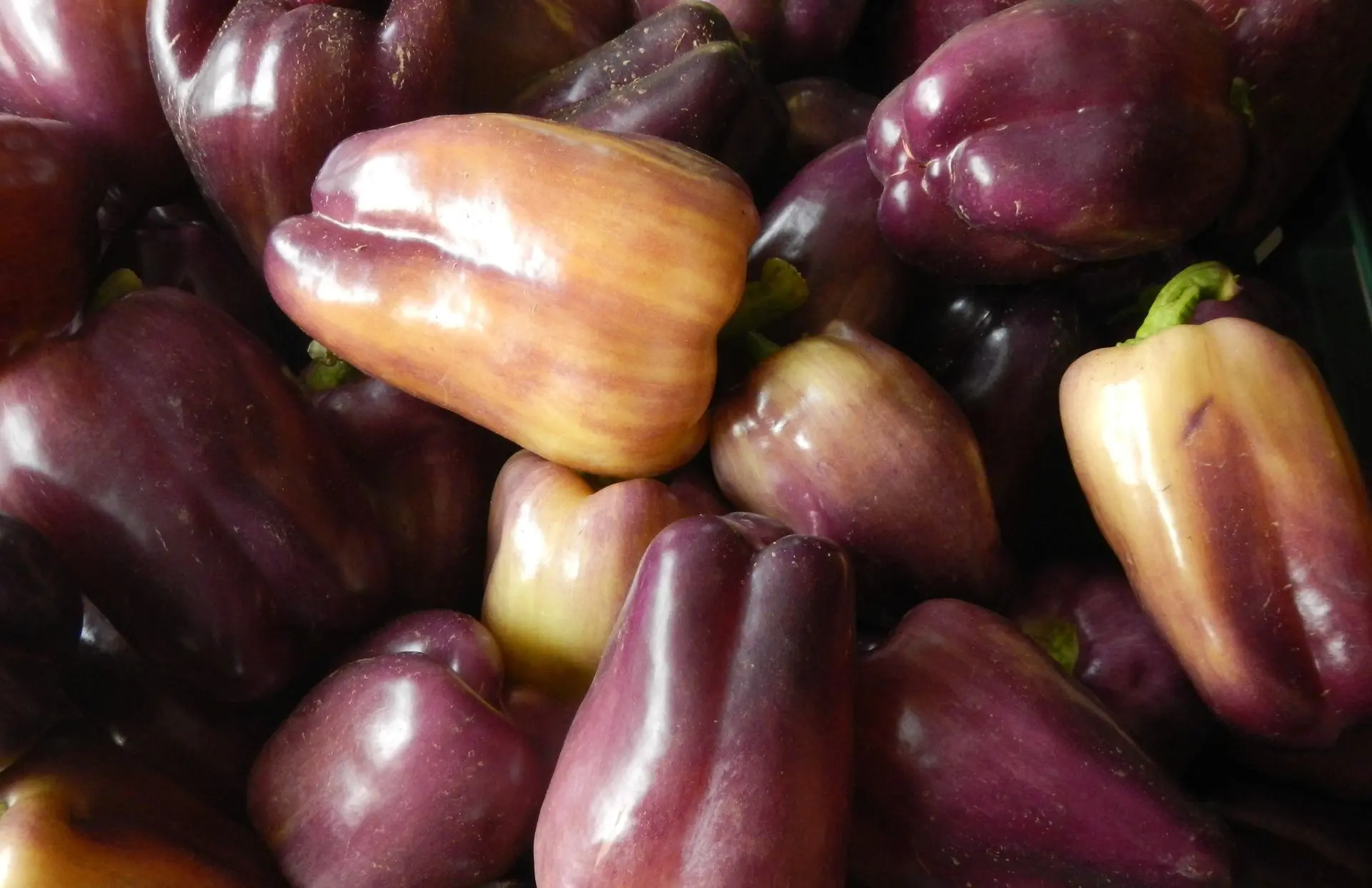

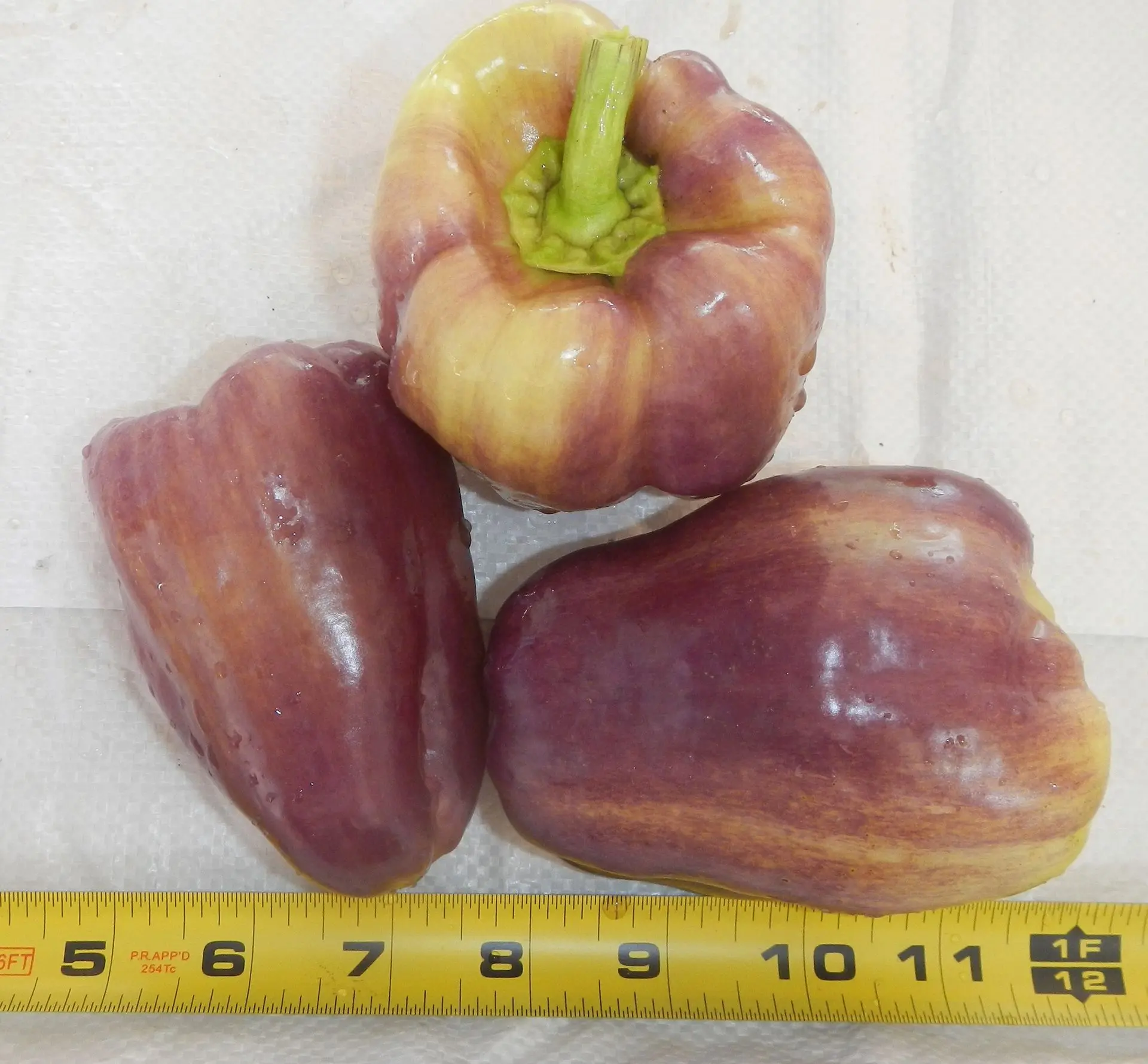
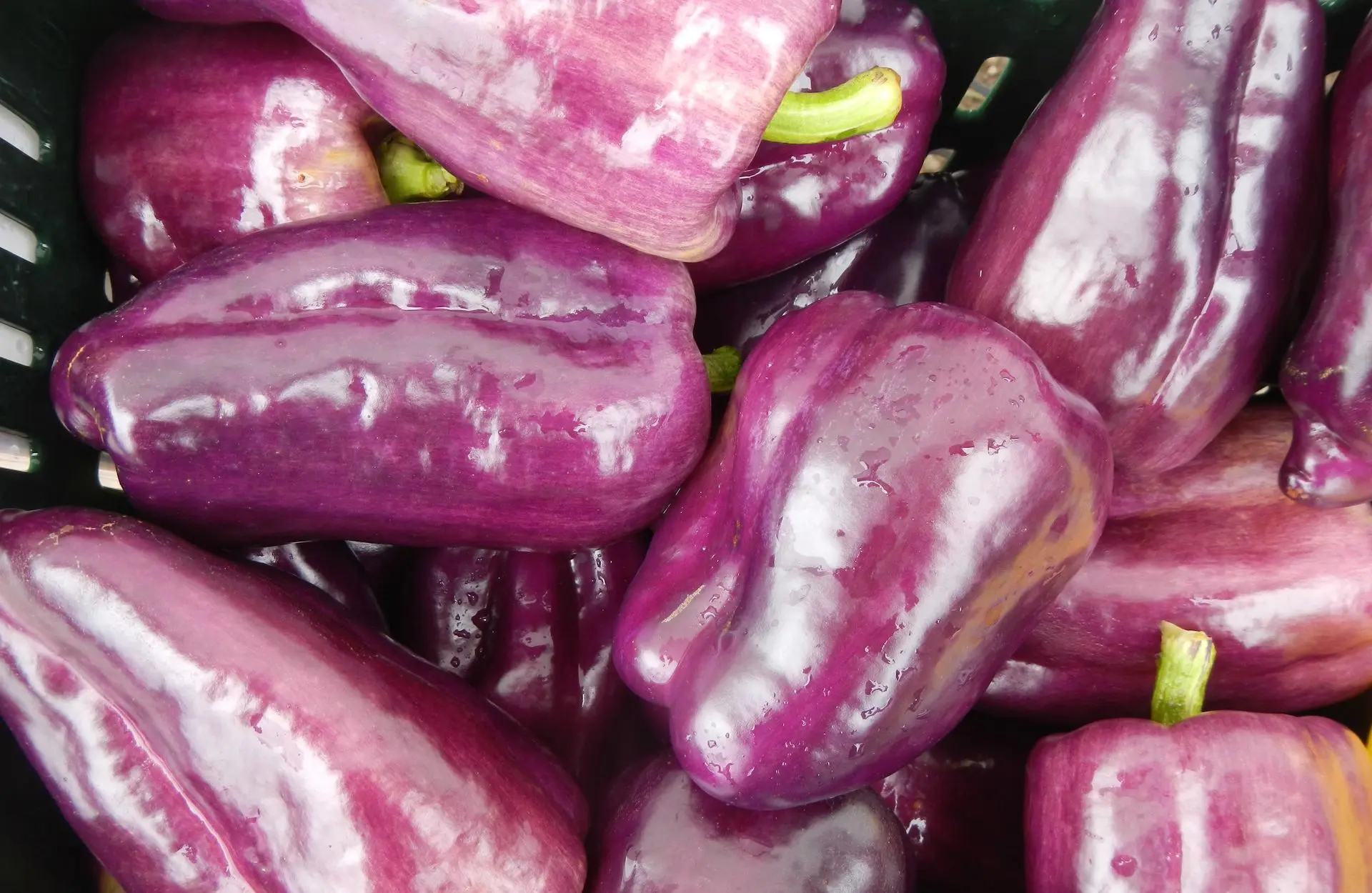

Lilac produces small to medium peppers that are a deep purple when unripe, develop yellow/orange streaking as they ripen, and turn deep red when fully ripe. These peppers have a similar flavor to a typical green/red bell pepper. They make a great colorful addition to dishes but will lose their color when cooked. They are highly productive all season and set fruit well in Iowa. A variety that we grow for our own production.
Available during May in a 4" pot. Plant outdoors after danger of frost has passed (May 15).
Light: Full Sun |
Fruit Size/Shape: Small/Medium Bell |
Color: Purple to Red |
Maturity: 56 days purple, 81 days red |
Flavor: Sweet |
Lilac produces small to medium peppers that are a deep purple when unripe, develop yellow/orange streaking as they ripen, and turn deep red when fully ripe. These peppers have a similar flavor to a typical green/red bell pepper. They make a great colorful addition to dishes but will lose their color when cooked. They are highly productive all season and set fruit well in Iowa. A variety that we grow for our own production.
Available during May in a 4" pot. Plant outdoors after danger of frost has passed (May 15).
Light: Full Sun |
Fruit Size/Shape: Small/Medium Bell |
Color: Purple to Red |
Maturity: 56 days purple, 81 days red |
Flavor: Sweet |
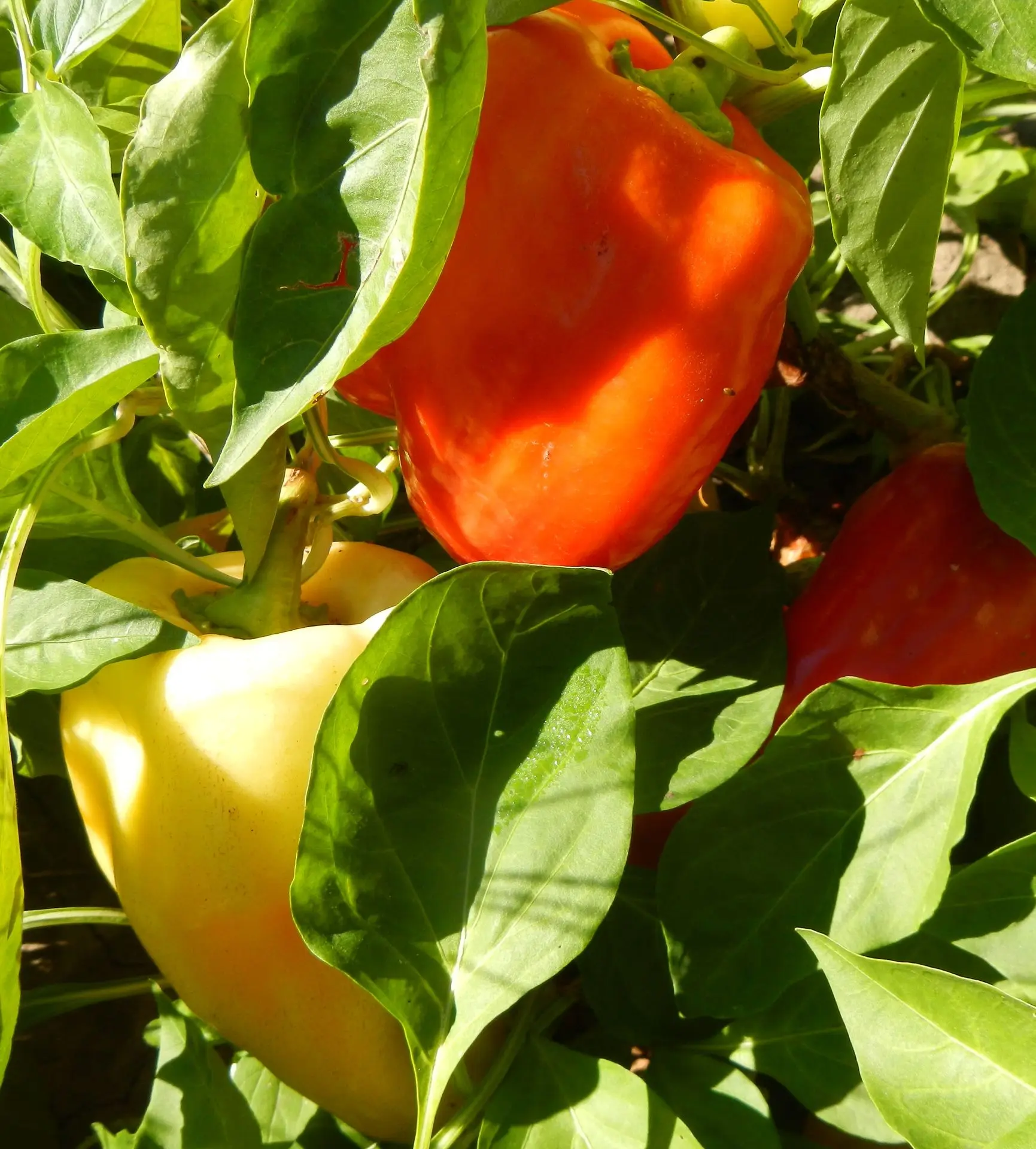
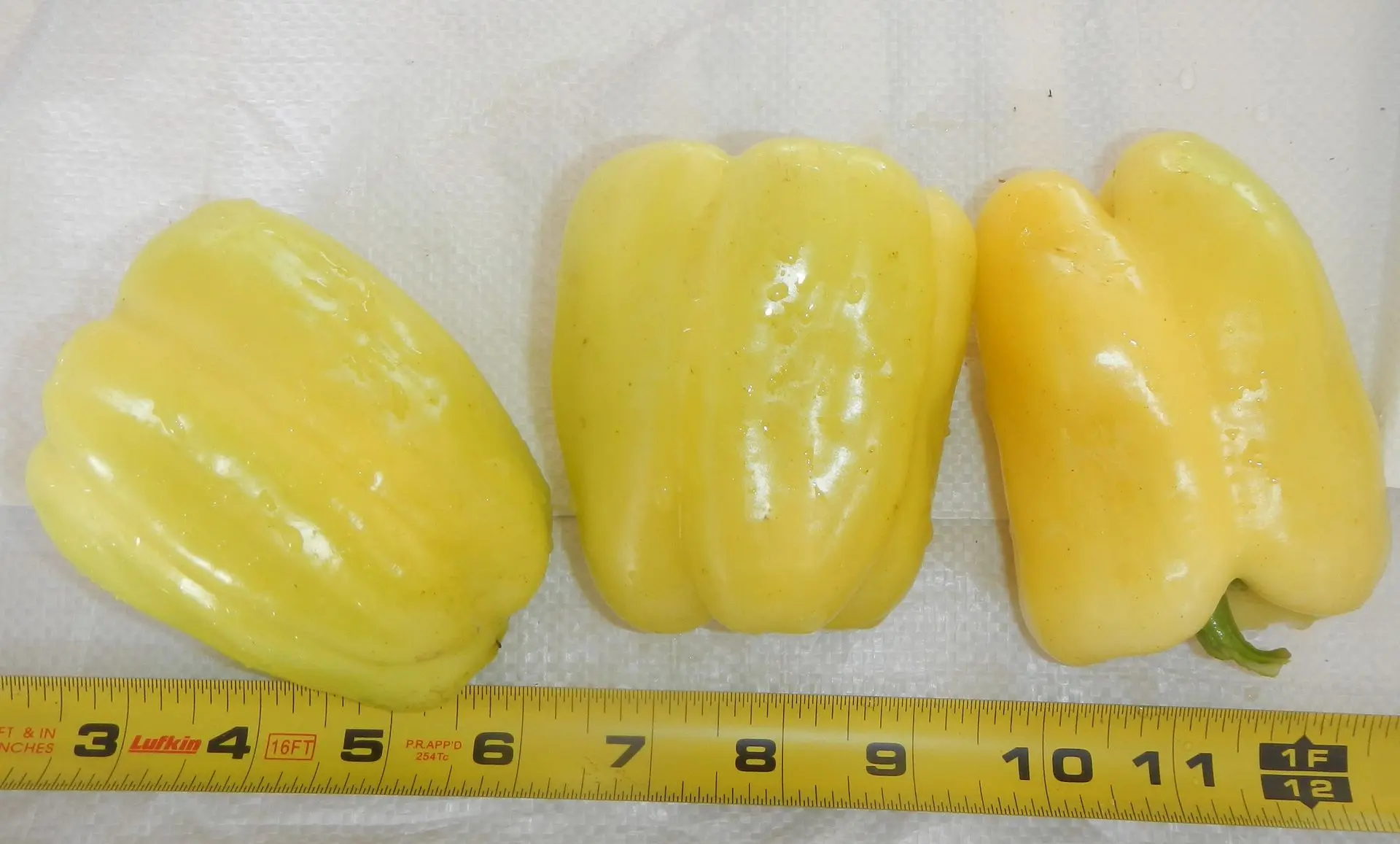
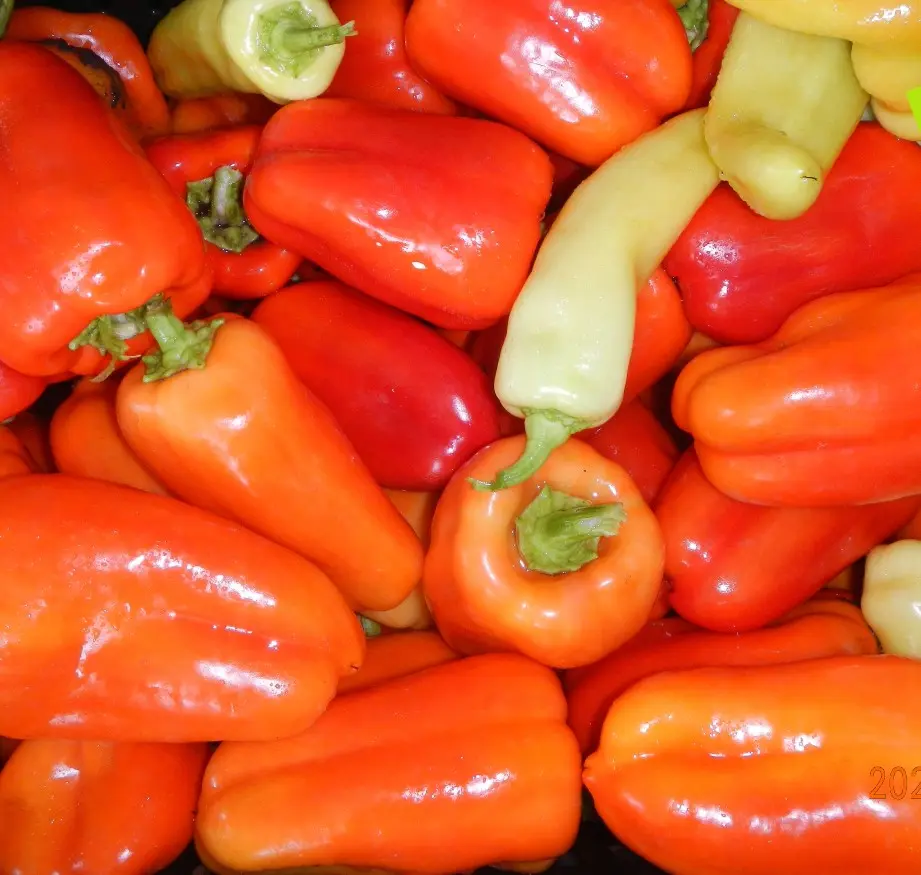

Flamingo is a medium sized yellow/white to orange pepper with a flavor that is similar to, but more subtle than a green/red bell. During good years they are extremely productive, but they are very susceptible to Bacterial Leaf Spot.
Available during May in a 4" pot. Plant outdoors after danger of frost has passed (May 15).
Light: Full Sun |
Fruit Size/Shape: Medium Bell |
Color: Yellow/White to Orange |
Maturity: 66 days yellow/white |
Flavor: Sweet |
Flamingo is a medium sized yellow/white to orange pepper with a flavor that is similar to, but more subtle than a green/red bell. During good years they are extremely productive, but they are very susceptible to Bacterial Leaf Spot.
Available during May in a 4" pot. Plant outdoors after danger of frost has passed (May 15).
Light: Full Sun |
Fruit Size/Shape: Medium Bell |
Color: Yellow/White to Orange |
Maturity: 66 days yellow/white |
Flavor: Sweet |
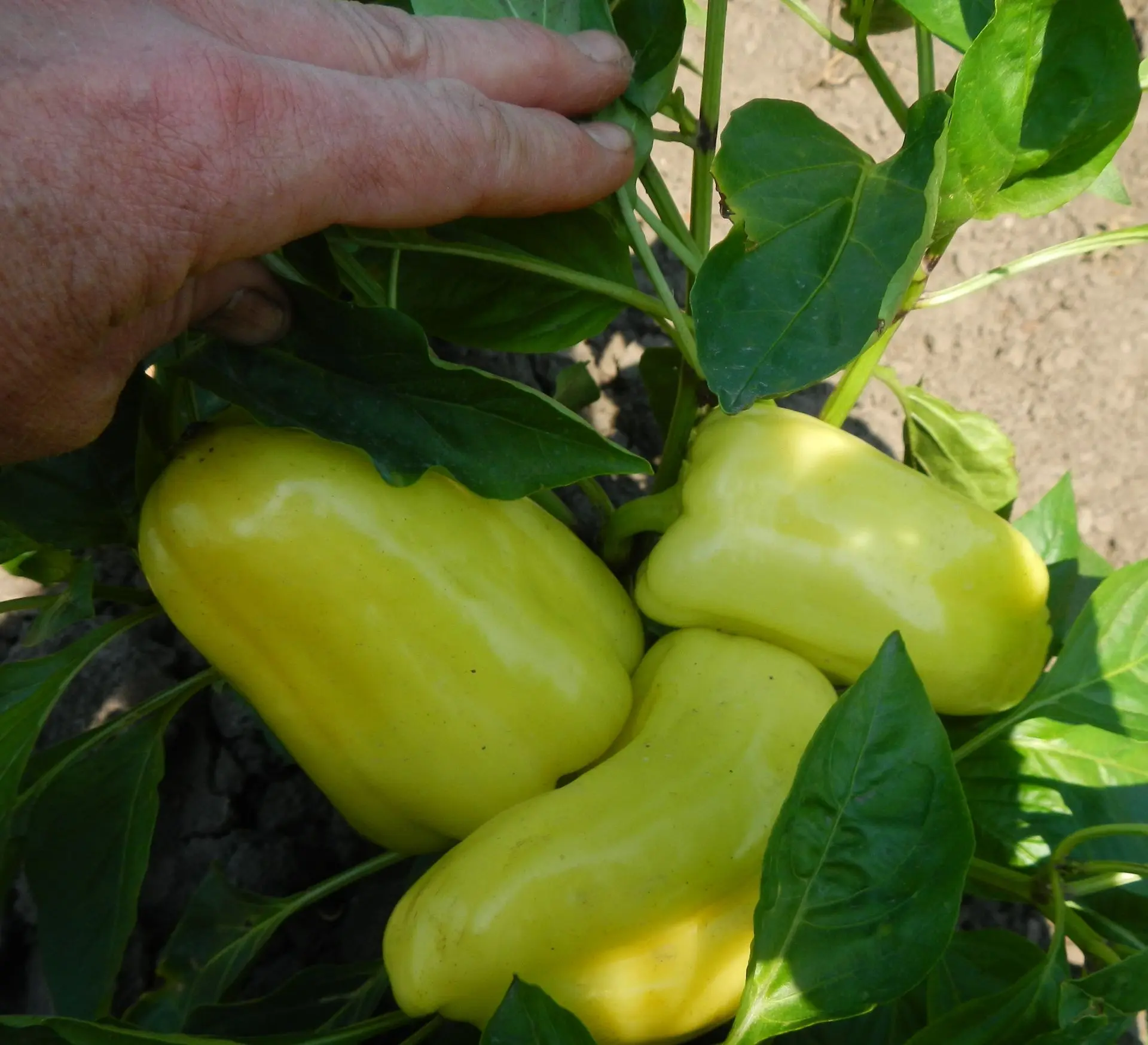
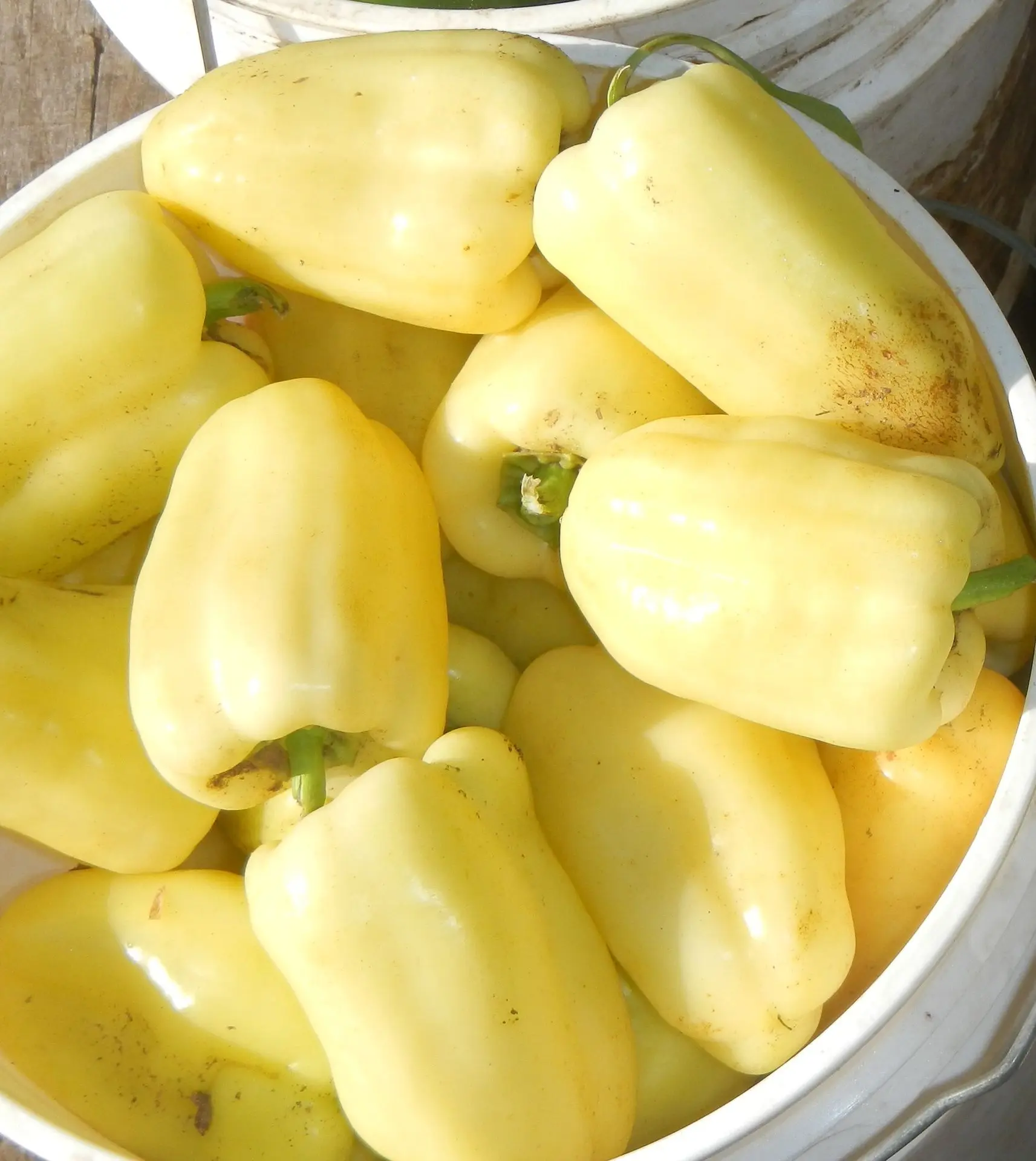


Oida produce large, blocky, yellow/white to orange fruit. Oida is an improvement on, and is nearly identical to, Flamingo, except that it has good resistance to Bacterial Leaf Spot–making it a better choice for growing in Iowa. A variety that we grow for our own production.
Available during May in a 4" pot. Plant outdoors after danger of frost has passed (May 15).
Light: Full Sun |
Fruit Size/Shape: Large Blocky Bell |
Color: Yellow/White to Orange |
Maturity: 66 days yellow/white |
Flavor: Sweet |
Oida produce large, blocky, yellow/white to orange fruit. Oida is an improvement on, and is nearly identical to, Flamingo, except that it has good resistance to Bacterial Leaf Spot–making it a better choice for growing in Iowa. A variety that we grow for our own production.
Available during May in a 4" pot. Plant outdoors after danger of frost has passed (May 15).
Light: Full Sun |
Fruit Size/Shape: Large Blocky Bell |
Color: Yellow/White to Orange |
Maturity: 66 days yellow/white |
Flavor: Sweet |
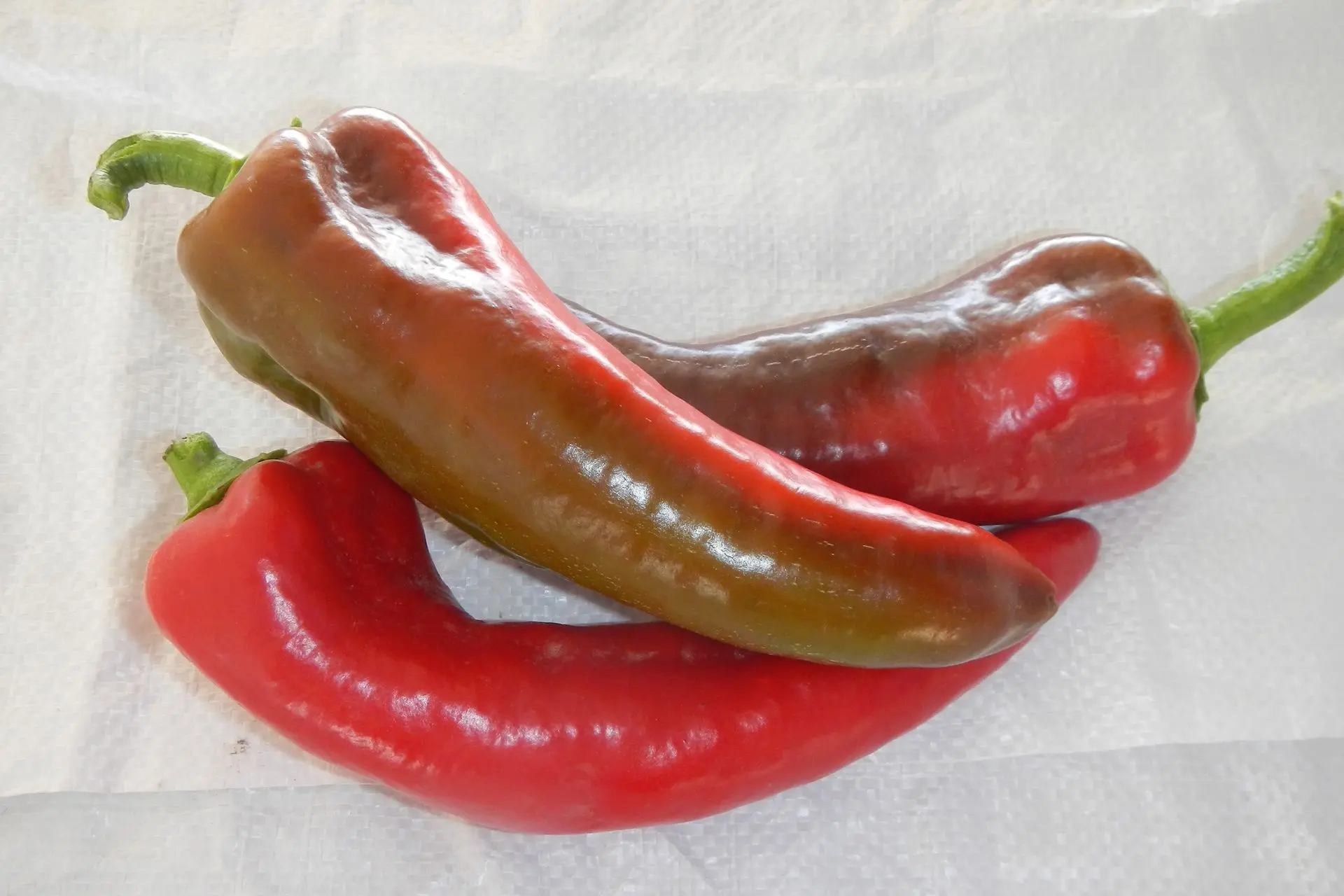
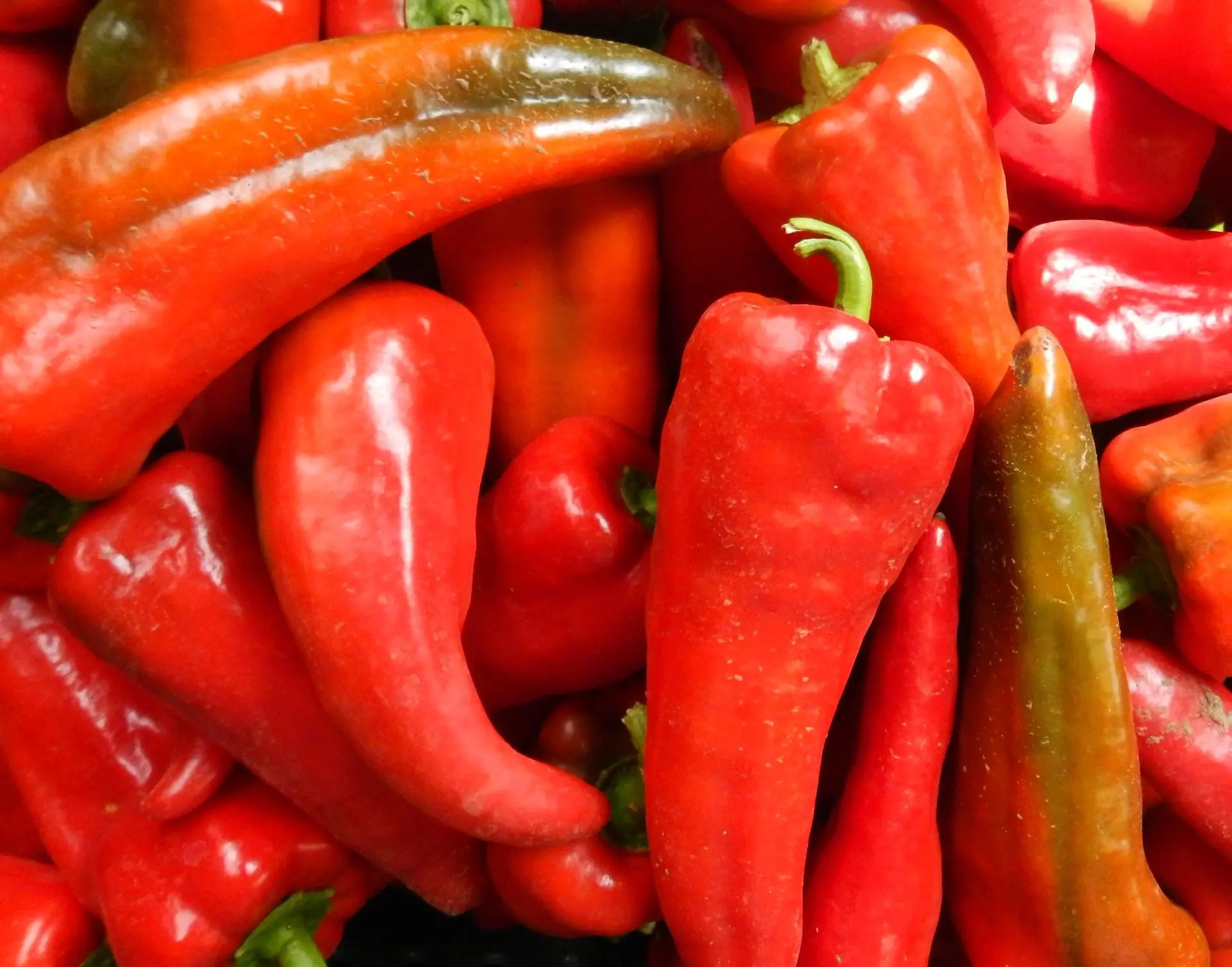

Carmen is an Italian "Bull's Horn" type pepper, medium in size with a long tapered shape. The fruit, typically harvested in the ripe red stage, are deliciously mild and sweet–the sweetest pepper we grow. The plants tends to be very productive. A variety that we grow for our own production.
Available during May in a 4" pot. Plant outdoors after danger of frost has passed (May 15).
Light: Full Sun |
Fruit Size/Shape: Medium Long Tapered |
Color: Green to Red |
Maturity: 80 days red |
Flavor: Extremely Sweet |
Carmen is an Italian "Bull's Horn" type pepper, medium in size with a long tapered shape. The fruit, typically harvested in the ripe red stage, are deliciously mild and sweet–the sweetest pepper we grow. The plants tends to be very productive. A variety that we grow for our own production.
Available during May in a 4" pot. Plant outdoors after danger of frost has passed (May 15).
Light: Full Sun |
Fruit Size/Shape: Medium Long Tapered |
Color: Green to Red |
Maturity: 80 days red |
Flavor: Extremely Sweet |
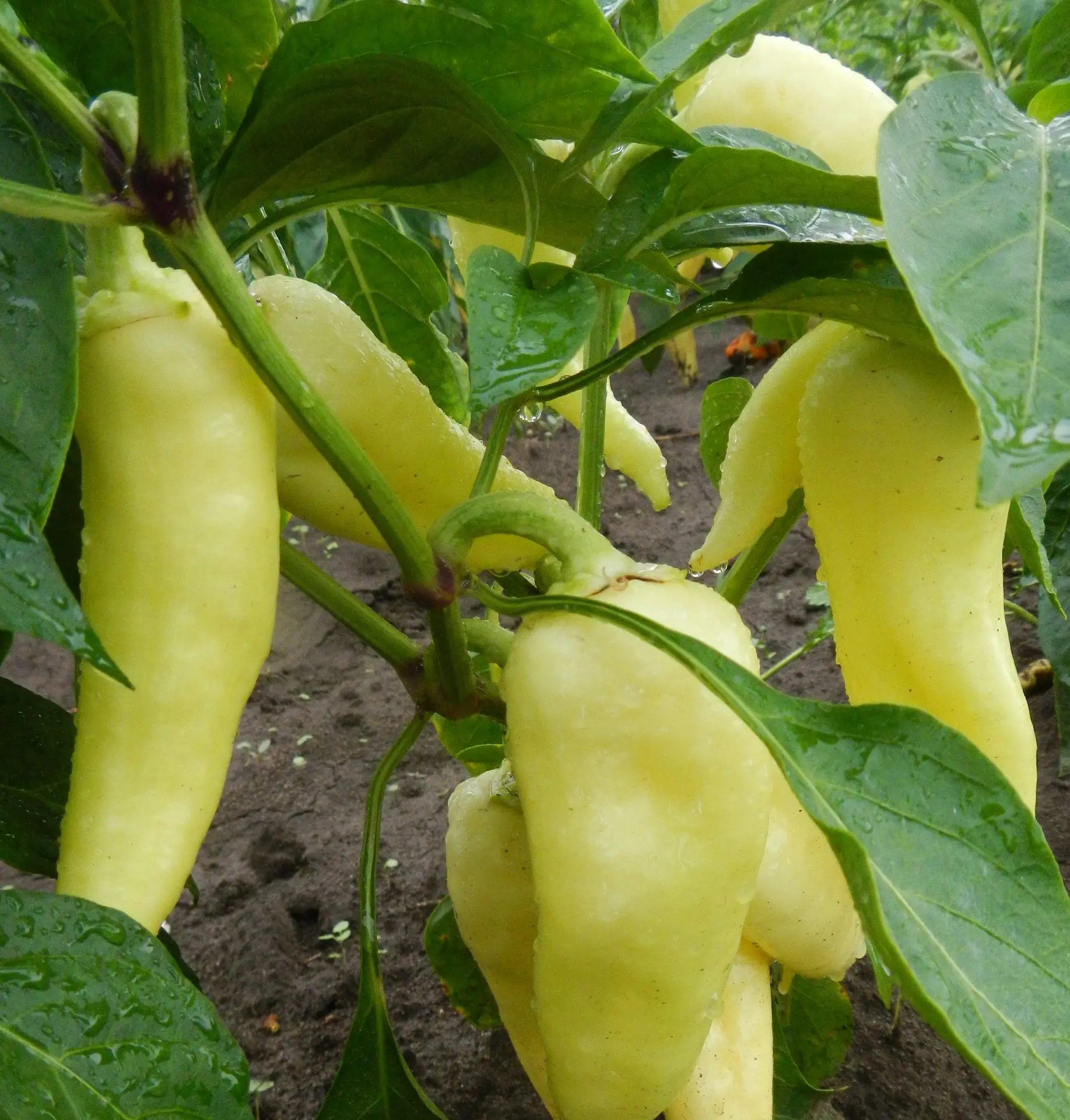
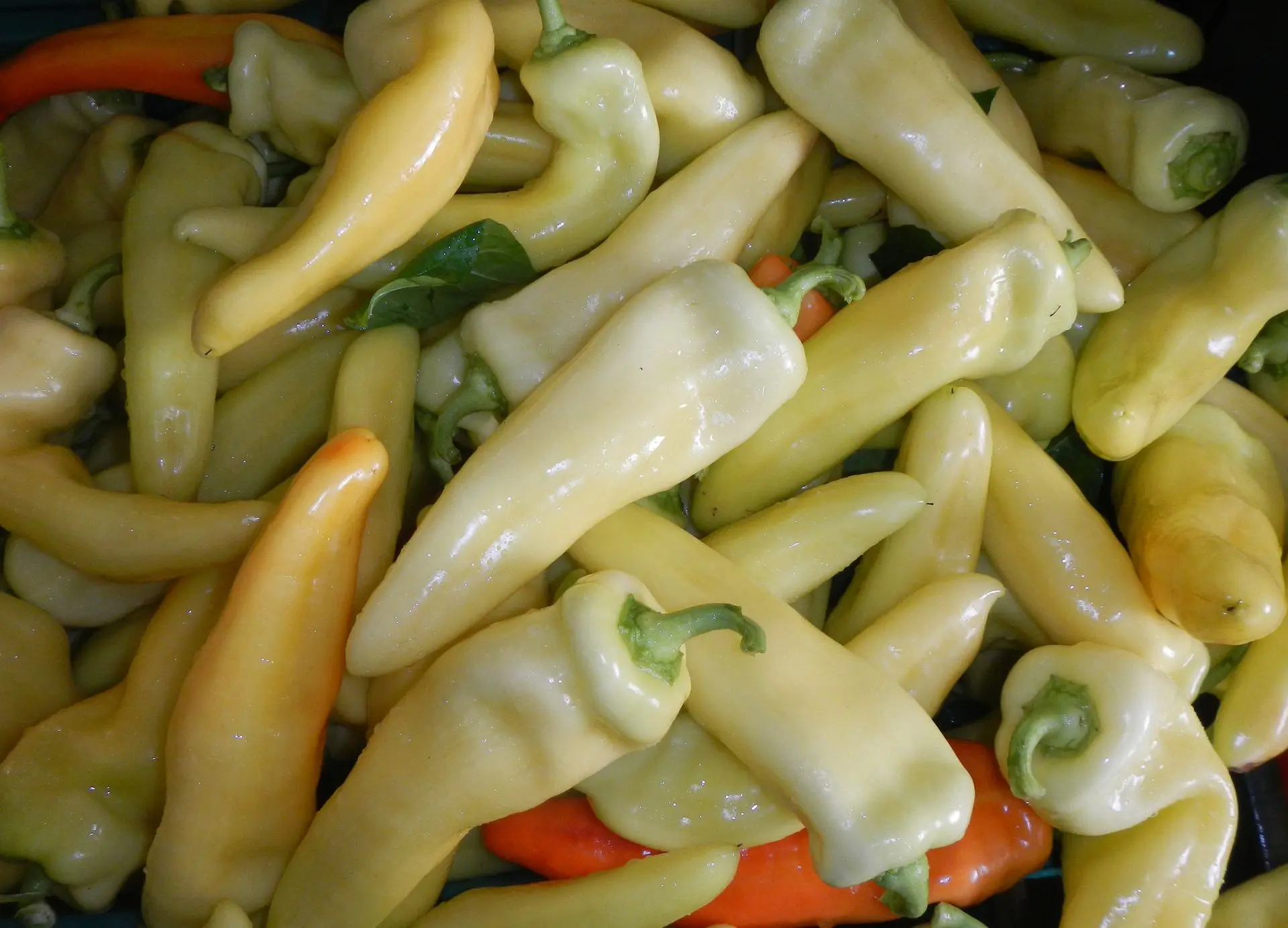
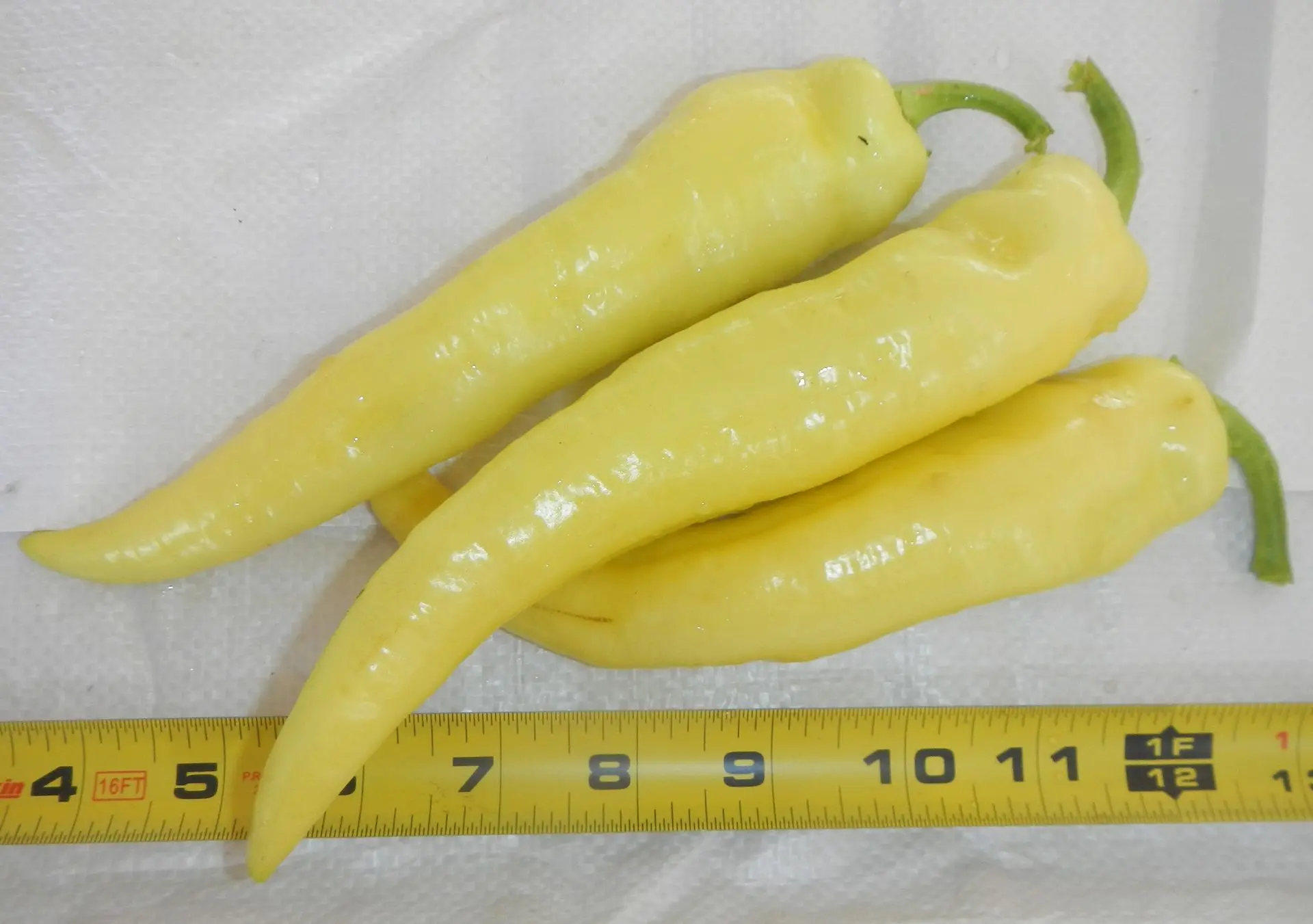

Banana peppers are sweet, long, slender, and are yellow ripening to red. A variety that we grow for our own production.
Available during May in a 4" pot. Plant outdoors after danger of frost has passed (May 15).
Light: Full Sun |
Fruit Size/Shape: Medium Long Slender Tapered |
Color: Yellow to Red |
Maturity: 70 days yellow |
Flavor: Sweet |
Banana peppers are sweet, long, slender, and are yellow ripening to red. A variety that we grow for our own production.
Available during May in a 4" pot. Plant outdoors after danger of frost has passed (May 15).
Light: Full Sun |
Fruit Size/Shape: Medium Long Slender Tapered |
Color: Yellow to Red |
Maturity: 70 days yellow |
Flavor: Sweet |
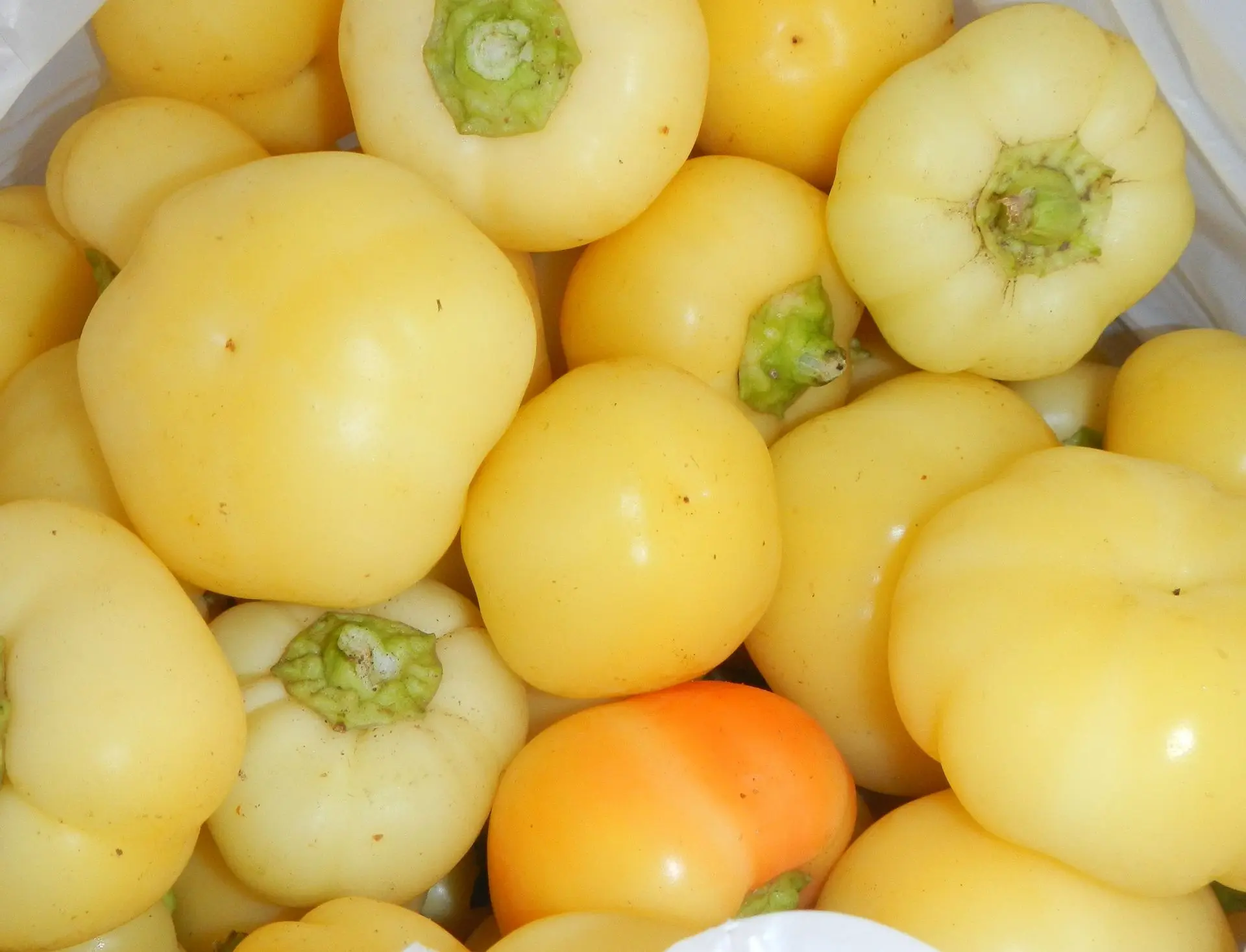

Alma produce small round fruit with thick walls. Unripe fruit are pale yellow/white and sweet. Ripe fruit turn orange and often have a mild spicy kick.
Available during May in a 4" pot. Plant outdoors after danger of frost has passed (May 15).
Light: Full Sun |
Fruit Size/Shape: Small Round |
Color: Yellow/White to Orange |
Maturity: 70 days yellow/white |
Flavor: Sweet to Mild Hot |
Alma produce small round fruit with thick walls. Unripe fruit are pale yellow/white and sweet. Ripe fruit turn orange and often have a mild spicy kick.
Available during May in a 4" pot. Plant outdoors after danger of frost has passed (May 15).
Light: Full Sun |
Fruit Size/Shape: Small Round |
Color: Yellow/White to Orange |
Maturity: 70 days yellow/white |
Flavor: Sweet to Mild Hot |
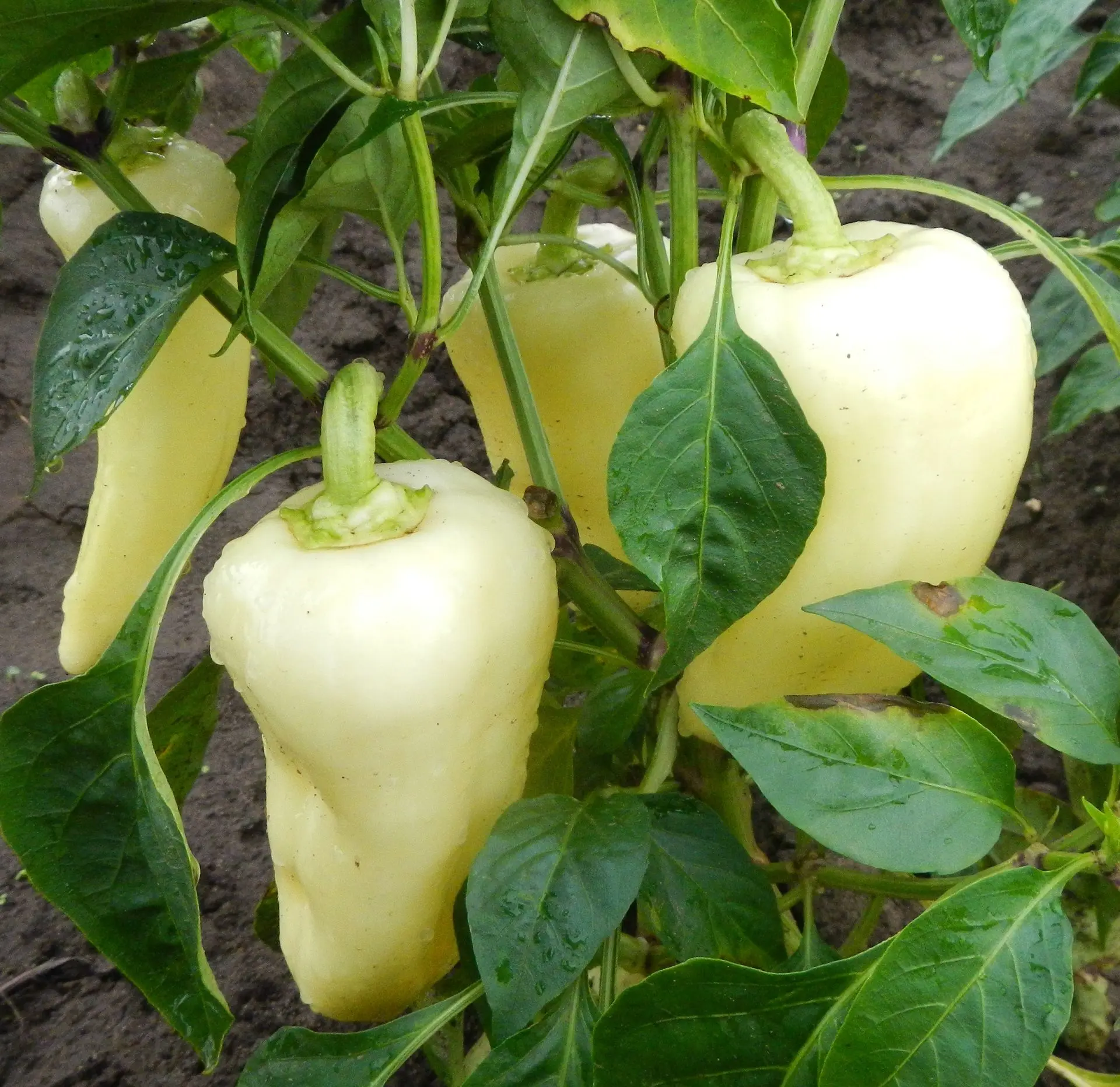
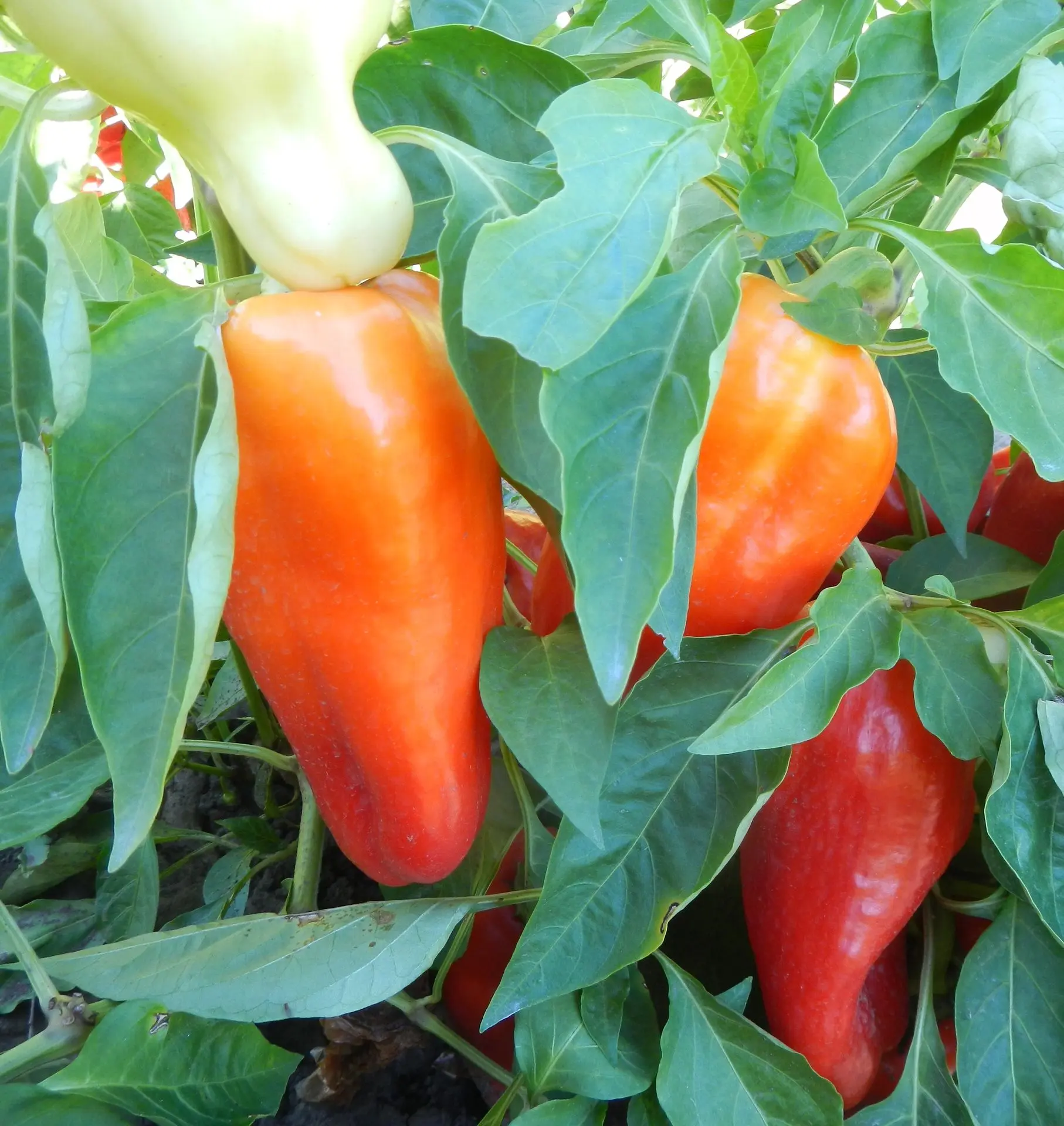
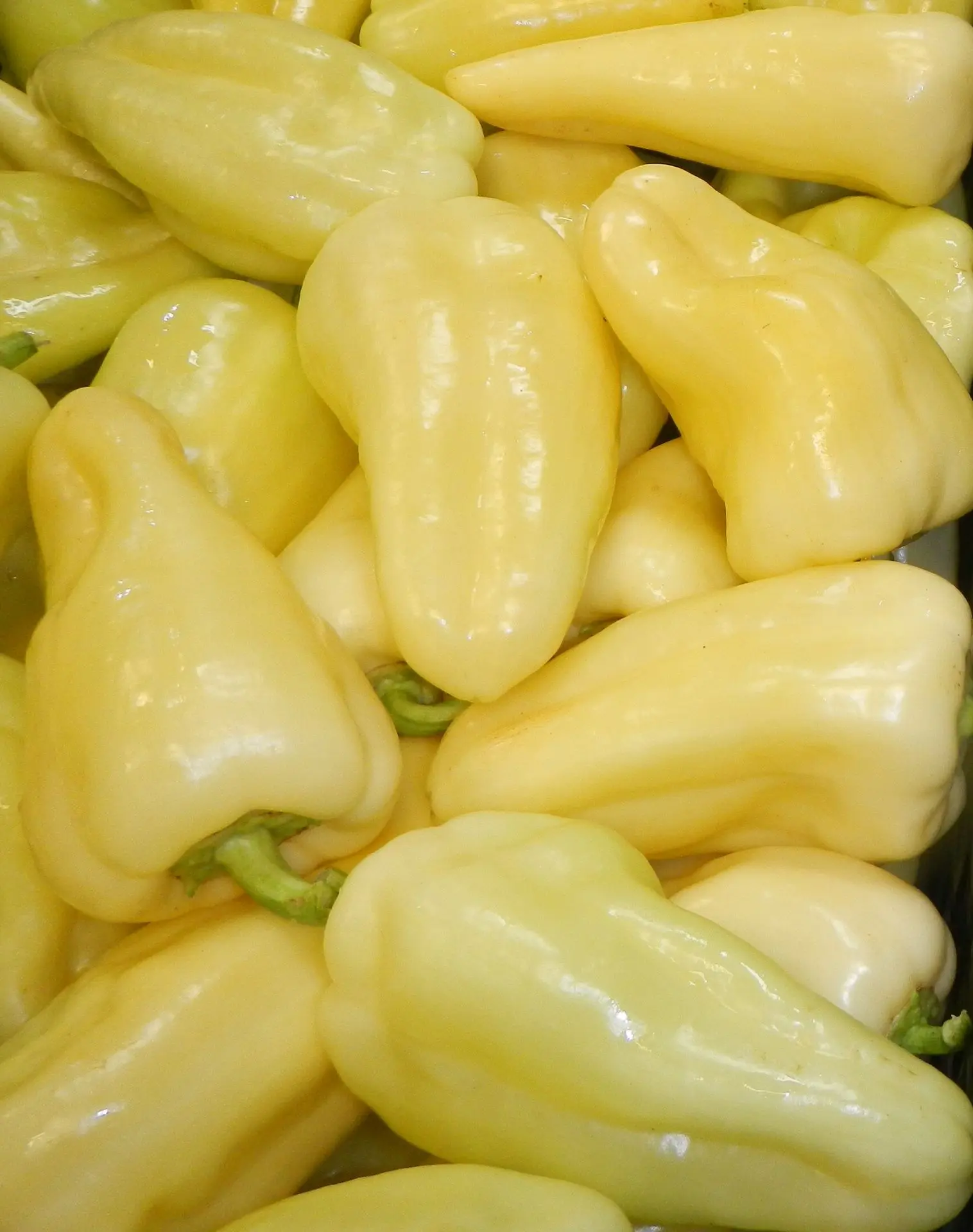

Jumbo Stuff produce large, conical, yellow/white to orange peppers. These sweet peppers are very similar to Flamingo, but with thinner walls and good tolerance to Bacterial Leaf Spot. Jumbo Stuff is extremely early and productive. A variety that we grow for our own production.
Available during May in a 4" pot. Plant outdoors after danger of frost has passed (May 15).
Light: Full Sun |
Fruit Size/Shape: Medium Conical |
Color: Yellow/White to Orange |
Maturity: 67 to yellow/white |
Flavor: Sweet |
Jumbo Stuff produce large, conical, yellow/white to orange peppers. These sweet peppers are very similar to Flamingo, but with thinner walls and good tolerance to Bacterial Leaf Spot. Jumbo Stuff is extremely early and productive. A variety that we grow for our own production.
Available during May in a 4" pot. Plant outdoors after danger of frost has passed (May 15).
Light: Full Sun |
Fruit Size/Shape: Medium Conical |
Color: Yellow/White to Orange |
Maturity: 67 to yellow/white |
Flavor: Sweet |
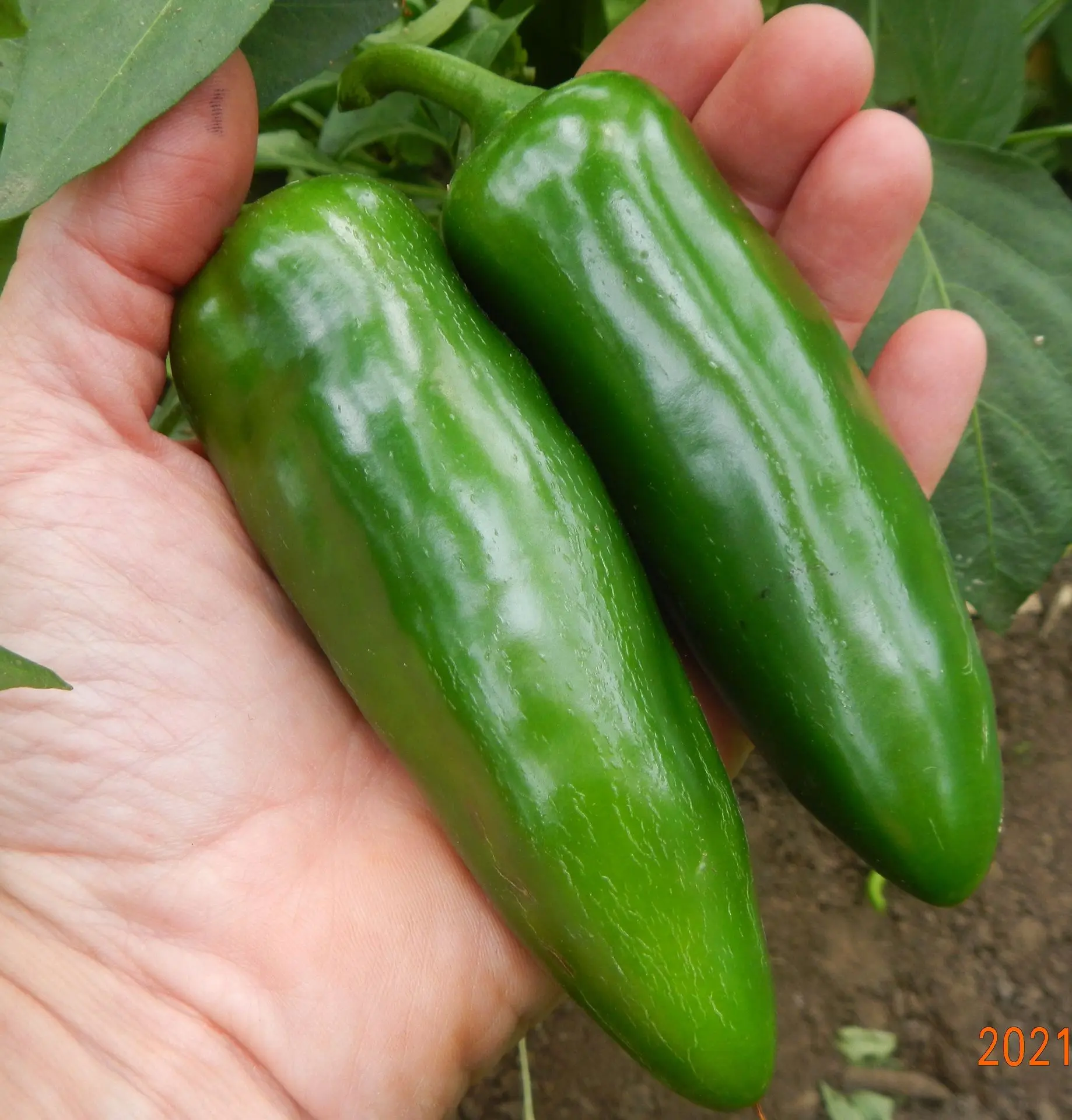
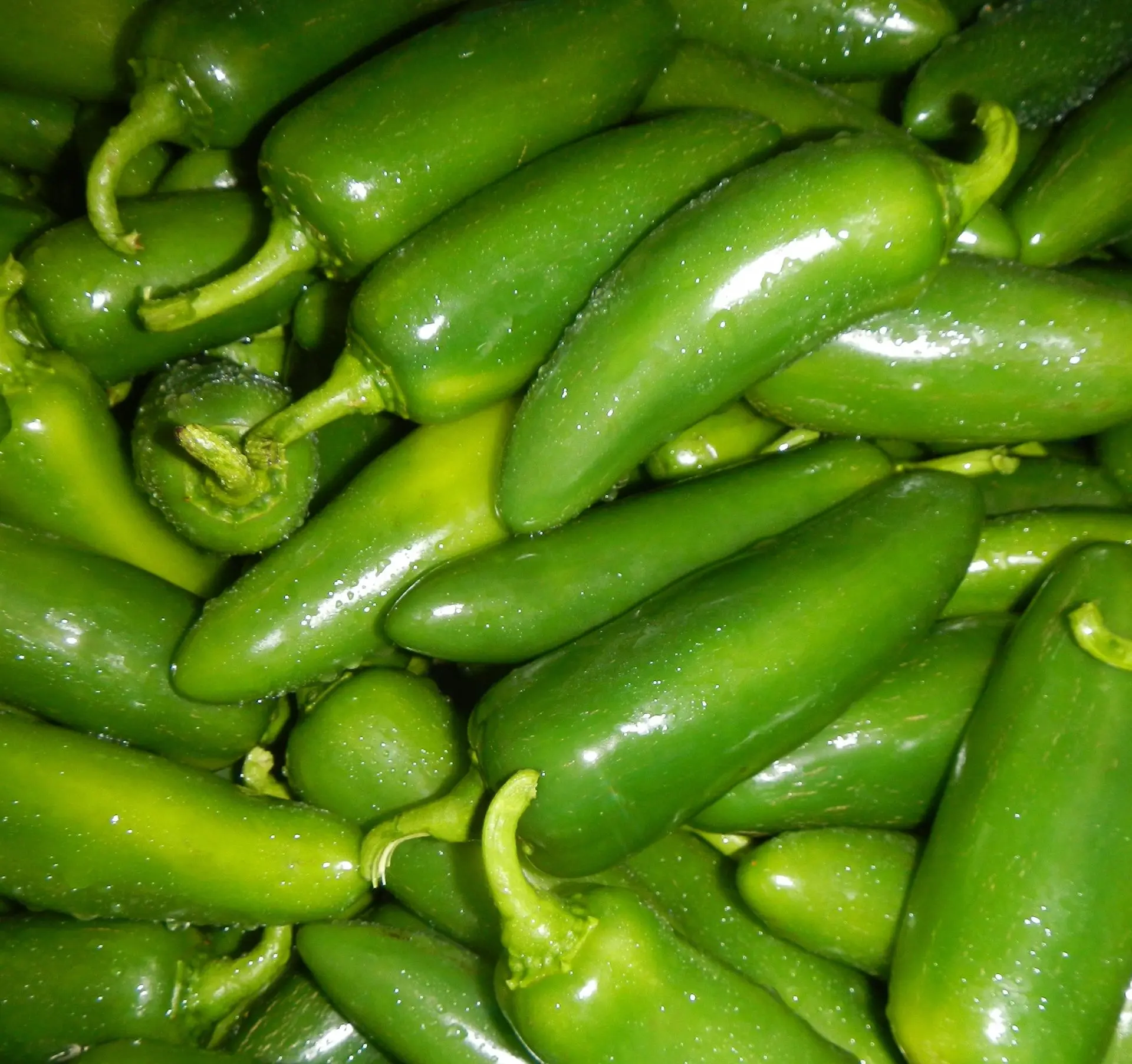

The jalapeno plants we offer are a variety that produce jumbo-sized fruit which reach maturity after 60 days. Ripe jalapenos develop checkered skin, turn red, and are significantly hotter and more flavorful. They are highly productive and typically do very well in Iowa. A variety that we grow for our own production.
Available during May in a 4" pot. Plant outdoors after danger of frost has passed (May 15).
Light: Full Sun |
Fruit Size/Shape: Large Cylindrical |
Color: Green to Red |
Maturity: 60 days green |
Flavor: Mild Hot (4,000-6,000 Scoville units) |
The jalapeno plants we offer are a variety that produce jumbo-sized fruit which reach maturity after 60 days. Ripe jalapenos develop checkered skin, turn red, and are significantly hotter and more flavorful. They are highly productive and typically do very well in Iowa. A variety that we grow for our own production.
Available during May in a 4" pot. Plant outdoors after danger of frost has passed (May 15).
Light: Full Sun |
Fruit Size/Shape: Large Cylindrical |
Color: Green to Red |
Maturity: 60 days green |
Flavor: Mild Hot (4,000-6,000 Scoville units) |
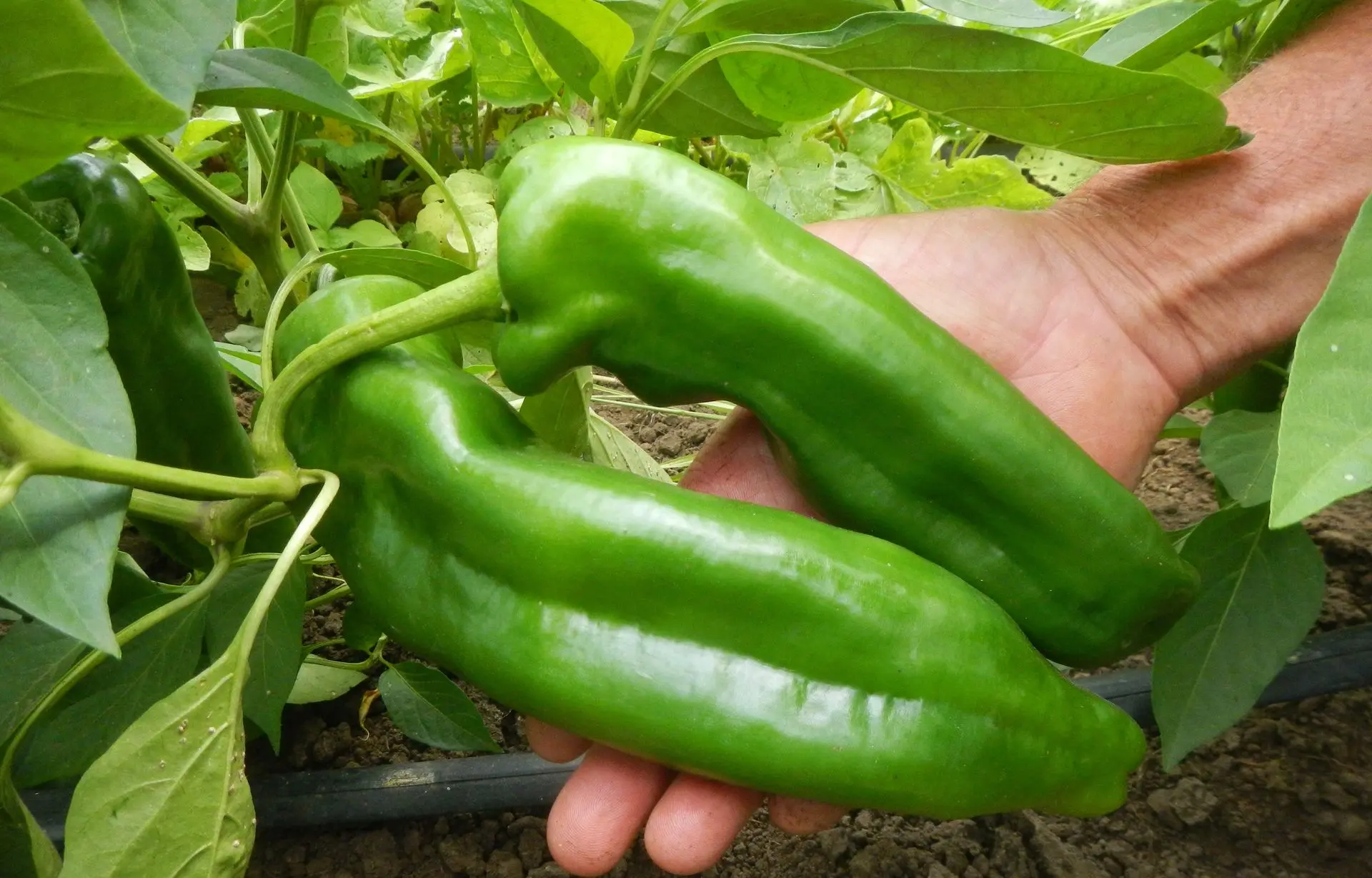


Anaheim plants produce large elongated peppers which are very mild, making them popular for stuffing, roasting, and eating fresh. A variety that we grow for our own production.
Available during May in a 4" pot. Plant outdoors after danger of frost has passed (May 15).
Light: Full Sun |
Fruit Size/Shape: Large Long Tapered |
Color: Green to Red |
Maturity: 65 green, 85 red |
Flavor: Mild Hot (500-2,000 Scoville units) |
Anaheim plants produce large elongated peppers which are very mild, making them popular for stuffing, roasting, and eating fresh. A variety that we grow for our own production.
Available during May in a 4" pot. Plant outdoors after danger of frost has passed (May 15).
Light: Full Sun |
Fruit Size/Shape: Large Long Tapered |
Color: Green to Red |
Maturity: 65 green, 85 red |
Flavor: Mild Hot (500-2,000 Scoville units) |
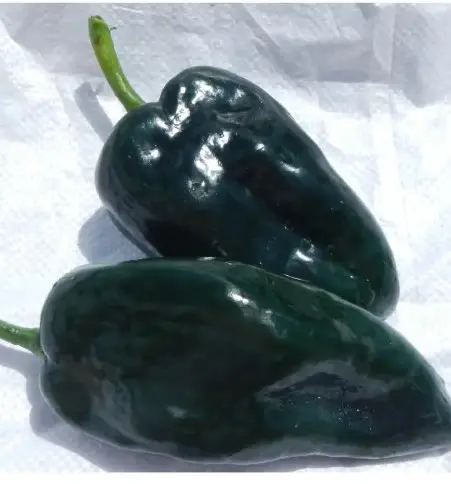

Poblanos are medium sized peppers with a wide, flattened, tapered shape. Their shape and flavor make them perfect for roasting and stuffing. Dried poblanos, especially ripe dried poblanos, are typically called anchos. A variety that we grow for our own production.
Available during May in a 4" pot. Plant outdoors after danger of frost has passed (May 15).
Light: Full Sun |
Fruit Size/Shape: Medium Wide Flattened Tapered |
Color: Dark Green to Deep Red |
Maturity: 65 to green, 85 to red |
Flavor: Mild Hot (1,000-2,000 Scoville units) |
Poblanos are medium sized peppers with a wide, flattened, tapered shape. Their shape and flavor make them perfect for roasting and stuffing. Dried poblanos, especially ripe dried poblanos, are typically called anchos. A variety that we grow for our own production.
Available during May in a 4" pot. Plant outdoors after danger of frost has passed (May 15).
Light: Full Sun |
Fruit Size/Shape: Medium Wide Flattened Tapered |
Color: Dark Green to Deep Red |
Maturity: 65 to green, 85 to red |
Flavor: Mild Hot (1,000-2,000 Scoville units) |
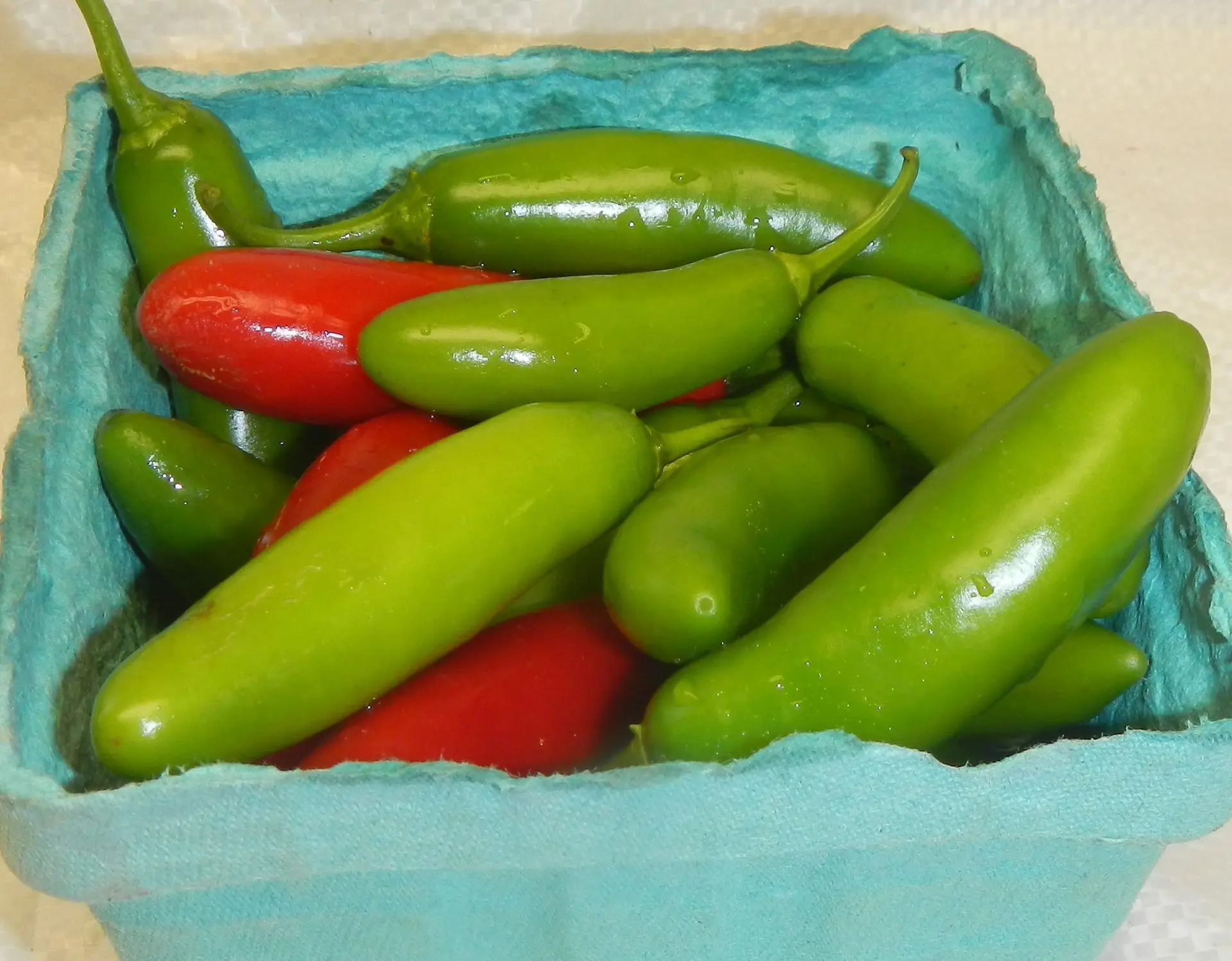

Serrano plants produce large numbers of small, cylindrical shaped, medium hot chili peppers. They are early and prolific producers. A variety that we grow for our own production.
Available during May in a 4" pot. Plant outdoors after danger of frost has passed (May 15).
Light: Full Sun |
Fruit Size/Shape: Small Cylindrical |
Color: Green to Red |
Maturity: 57 to green, 77 to red |
Flavor: Medium Hot (5,000-20,000 Scoville units) |
Serrano plants produce large numbers of small, cylindrical shaped, medium hot chili peppers. They are early and prolific producers. A variety that we grow for our own production.
Available during May in a 4" pot. Plant outdoors after danger of frost has passed (May 15).
Light: Full Sun |
Fruit Size/Shape: Small Cylindrical |
Color: Green to Red |
Maturity: 57 to green, 77 to red |
Flavor: Medium Hot (5,000-20,000 Scoville units) |
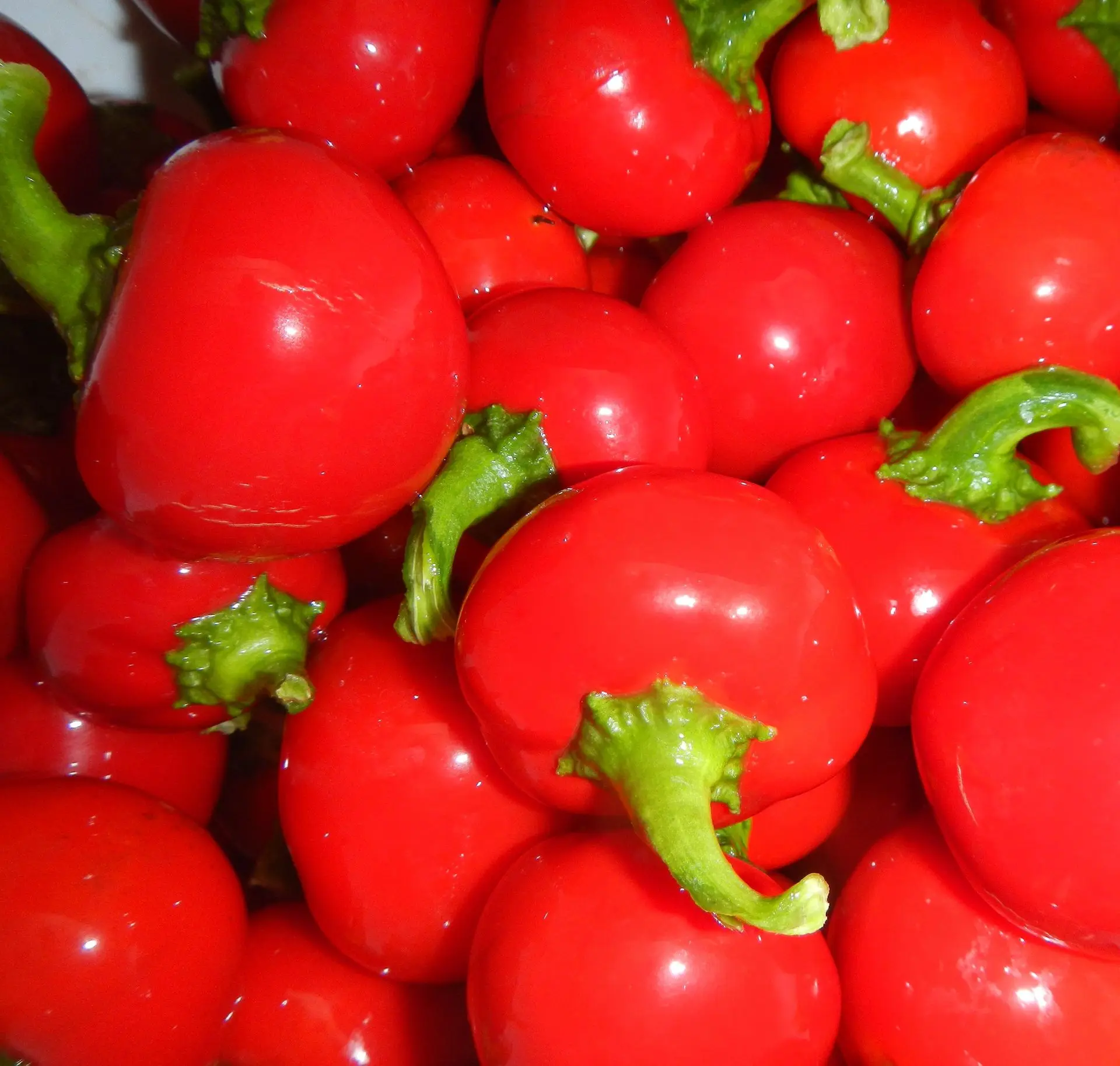

Big Bomb are a small, round, mild hot pepper. They are typically harvested in the ripe red stage. A variety that we grow for our own production.
Available during May in a 4" pot. Plant outdoors after danger of frost has passed (May 15).
Light: Full Sun |
Fruit Size/Shape: Small Round |
Color: Green to Red |
Maturity: 85 days red |
Flavor: Mild Hot (2,500-5,000 Scoville units) |
Big Bomb are a small, round, mild hot pepper. They are typically harvested in the ripe red stage. A variety that we grow for our own production.
Available during May in a 4" pot. Plant outdoors after danger of frost has passed (May 15).
Light: Full Sun |
Fruit Size/Shape: Small Round |
Color: Green to Red |
Maturity: 85 days red |
Flavor: Mild Hot (2,500-5,000 Scoville units) |

Shishito peppers are small, elongated, and wrinkled, with very thin walls. They are extremely mild, making them perfect for adding extra flavor to salads and other dishes. The fruit are green in the unripe stage and red when ripe. A variety that we grow for our own production.
Available during May in a 4" pot. Plant outdoors after danger of frost has passed (May 15).
Light: Full Sun |
Fruit Size/Shape: Small Elongated Wrinkled |
Color: Green to Red |
Maturity: 60 days green, 80 days red |
Flavor: Mild Hot (50-200 Scoville units) |
Shishito peppers are small, elongated, and wrinkled, with very thin walls. They are extremely mild, making them perfect for adding extra flavor to salads and other dishes. The fruit are green in the unripe stage and red when ripe. A variety that we grow for our own production.
Available during May in a 4" pot. Plant outdoors after danger of frost has passed (May 15).
Light: Full Sun |
Fruit Size/Shape: Small Elongated Wrinkled |
Color: Green to Red |
Maturity: 60 days green, 80 days red |
Flavor: Mild Hot (50-200 Scoville units) |
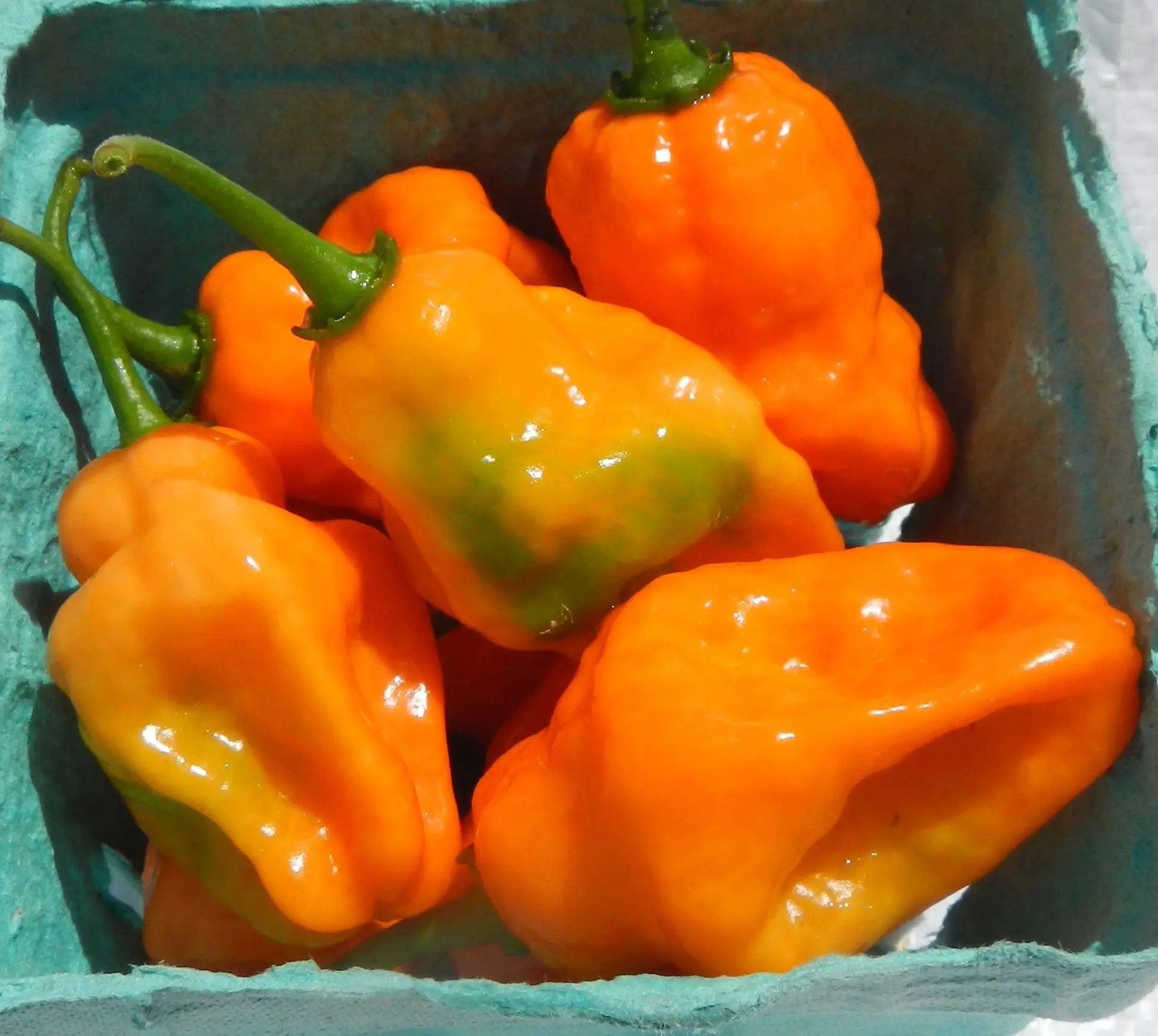

Habanero plants produce short, deeply lobed fruit that is bright orange and very hot. The fruit begin green, but are typically harvested in the ripe orange stage. The plants are very vigorous and generally are high yielding. A variety that we grow for our own production.
Available during May in a 4" pot. Plant outdoors after danger of frost has passed (May 15).
Light: Full Sun |
Fruit Size/Shape: Small Short Irregular |
Color: Green to Orange |
Maturity: 84 days orange |
Flavor: Very Hot (100,000-350,000 Scoville units) |
Habanero plants produce short, deeply lobed fruit that is bright orange and very hot. The fruit begin green, but are typically harvested in the ripe orange stage. The plants are very vigorous and generally are high yielding. A variety that we grow for our own production.
Available during May in a 4" pot. Plant outdoors after danger of frost has passed (May 15).
Light: Full Sun |
Fruit Size/Shape: Small Short Irregular |
Color: Green to Orange |
Maturity: 84 days orange |
Flavor: Very Hot (100,000-350,000 Scoville units) |
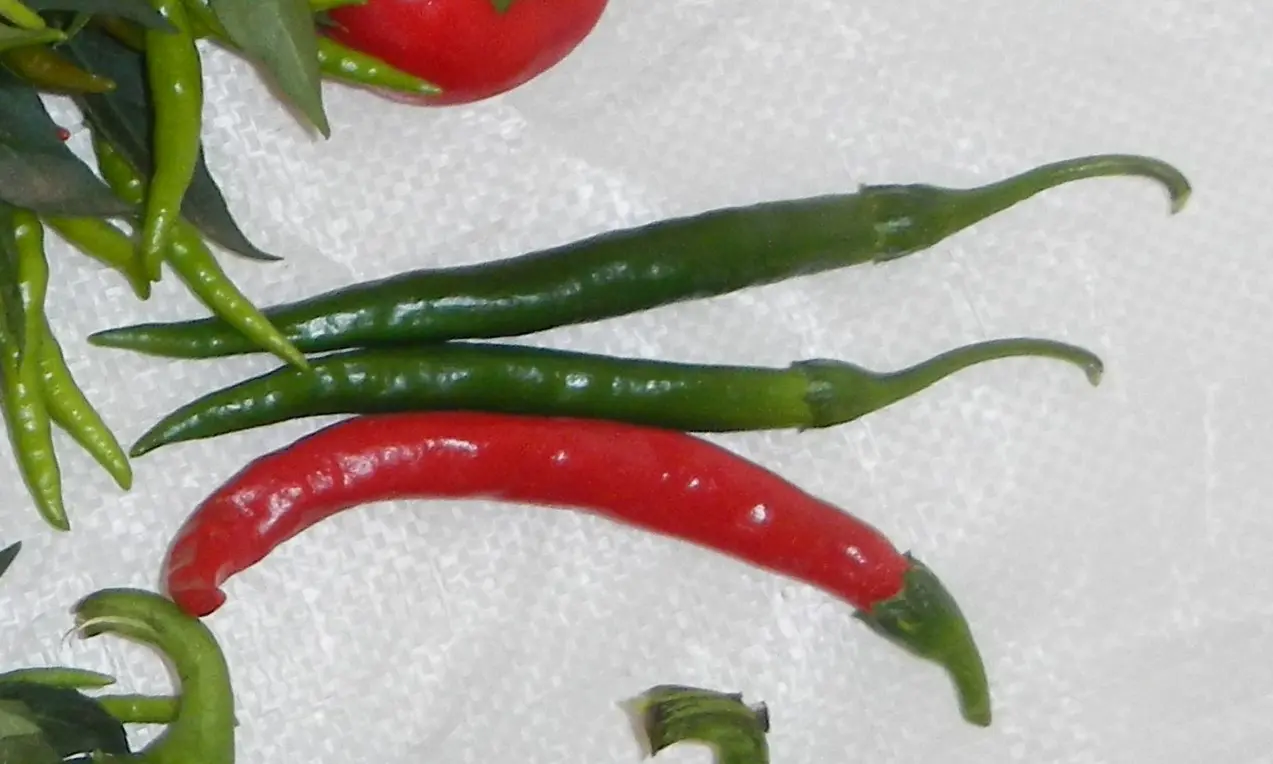

Slim Cayenne peppers are long, narrow, green to red chilis that are medium hot.
Available during May in a 4" pot. Plant outdoors after danger of frost has passed (May 15).
Light: Full Sun |
Fruit Size/Shape: Small Long Narrow |
Color: Green to Red |
Maturity: 79 days red |
Flavor: Hot (⁓30,000 Scoville units) |
Slim Cayenne peppers are long, narrow, green to red chilis that are medium hot.
Available during May in a 4" pot. Plant outdoors after danger of frost has passed (May 15).
Light: Full Sun |
Fruit Size/Shape: Small Long Narrow |
Color: Green to Red |
Maturity: 79 days red |
Flavor: Hot (⁓30,000 Scoville units) |
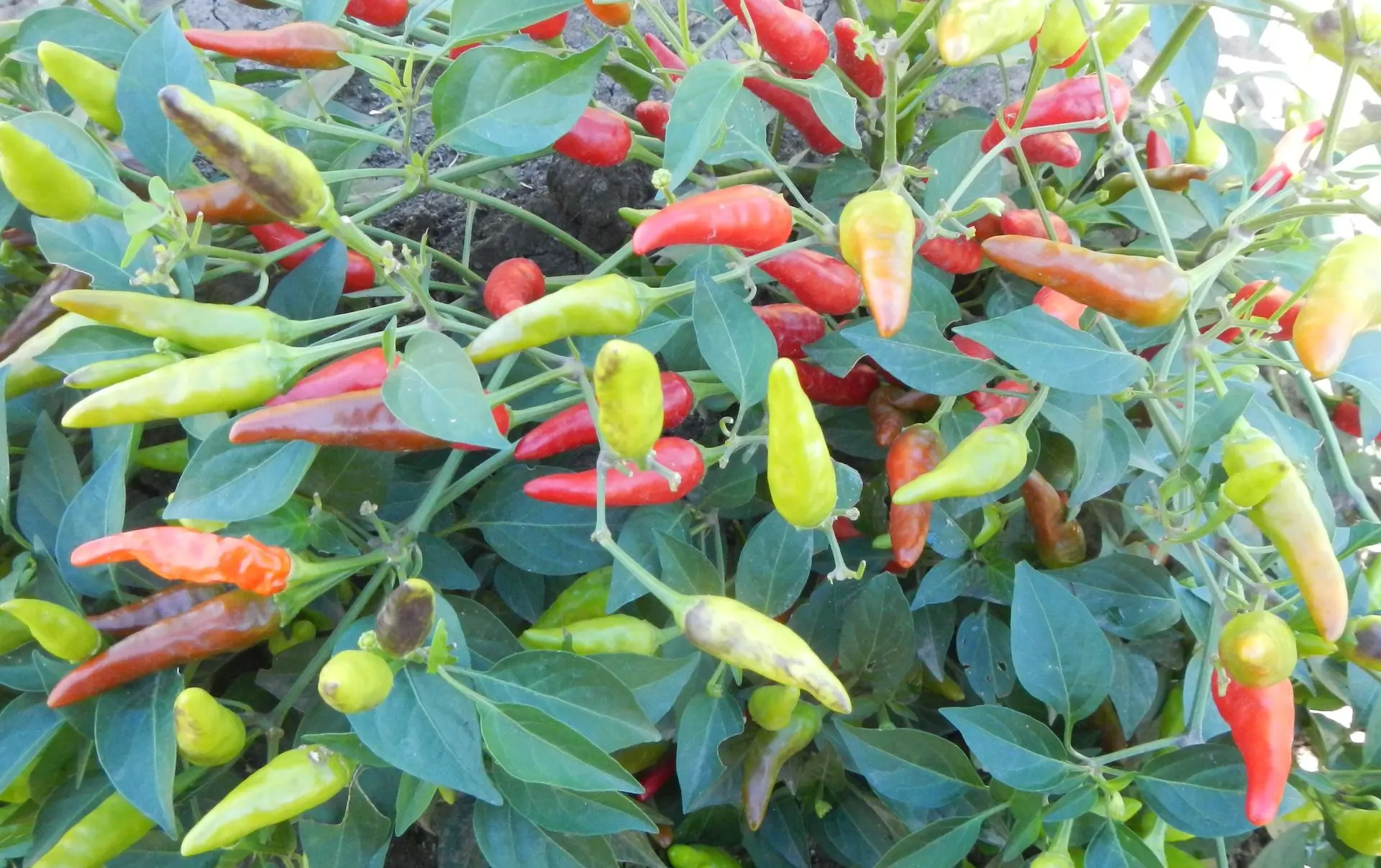

Super Chilis produce small, very hot, green to red chilis. These flavorful peppers are popular in certain Asian cultures and cuisines. A variety that we grow for our own production.
Available during May in a 4" pot. Plant outdoors after danger of frost has passed (May 15).
Light: Full Sun |
Fruit Size/Shape: Small Short Conical |
Color: Lime to Red |
Maturity: 85 days red |
Flavor: Very Hot (40,000-50,000 Scoville units) |
Super Chilis produce small, very hot, green to red chilis. These flavorful peppers are popular in certain Asian cultures and cuisines. A variety that we grow for our own production.
Available during May in a 4" pot. Plant outdoors after danger of frost has passed (May 15).
Light: Full Sun |
Fruit Size/Shape: Small Short Conical |
Color: Lime to Red |
Maturity: 85 days red |
Flavor: Very Hot (40,000-50,000 Scoville units) |
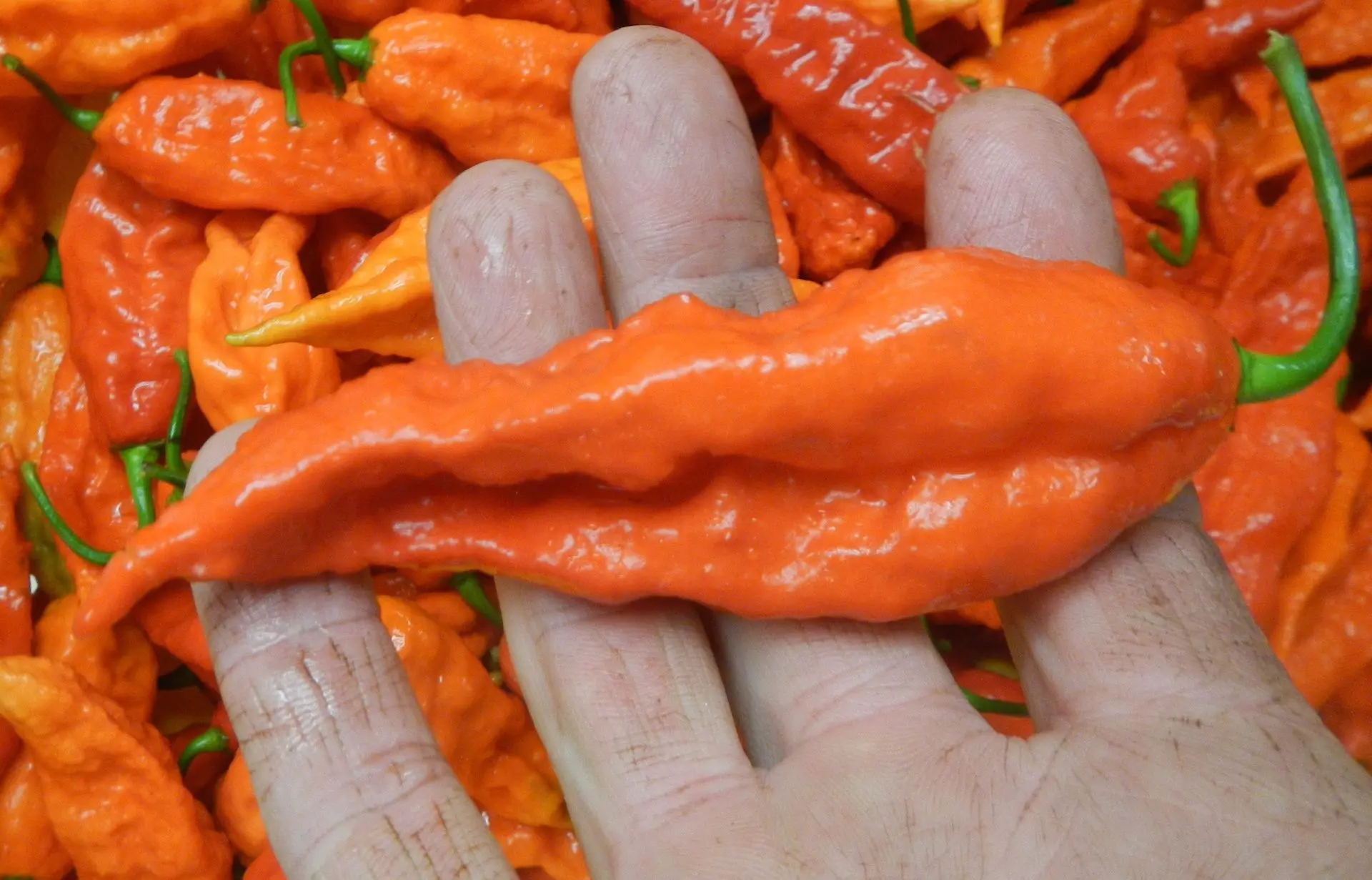

Ghost peppers (also known as Bhut Jolokia) are EXTREMELY HOT. The fruit begin green and ripen to orange/red. The long, somewhat wrinkly, and deeply lobed fruit make a unique and attractive addition to the garden.
Available during May in a 4" pot. Because Ghost peppers are so hot, they are normally not displayed with the rest of our hot peppers at market/farm sales. Please ask us if you are interested in purchasing these. Plant outdoors after danger of frost has passed (May 15).
Light: Full Sun |
Fruit Size/Shape: Small Long Wrinkly |
Color: Green to Orange |
Maturity: 95 days orange |
Flavor: Extremely Hot (over 1,000,000 Scoville Units) |
Ghost peppers (also known as Bhut Jolokia) are EXTREMELY HOT. The fruit begin green and ripen to orange/red. The long, somewhat wrinkly, and deeply lobed fruit make a unique and attractive addition to the garden.
Available during May in a 4" pot. Because Ghost peppers are so hot, they are normally not displayed with the rest of our hot peppers at market/farm sales. Please ask us if you are interested in purchasing these. Plant outdoors after danger of frost has passed (May 15).
Light: Full Sun |
Fruit Size/Shape: Small Long Wrinkly |
Color: Green to Orange |
Maturity: 95 days orange |
Flavor: Extremely Hot (over 1,000,000 Scoville Units) |

Carolina Reapers produce EXTREMELY HOT peppers that ripen to deep red. The fruit are squat, wrinkled, and irregular shaped. The Carolina Reaper was named the world's hottest pepper in 2015. A variety that we grow for our own production.
Available during May in a 4" pot. Because Carolina Reapers are so hot, they are normally not displayed with the rest of our hot peppers at market/farm sales. Please ask us if you are interested in purchasing these. Plant outdoors after danger of frost has passed (May 15).
Light: Full Sun |
Fruit Size/Shape: Small Short Irregular |
Color: Green to Orange to Red |
Maturity: 90 days red |
Flavor: Extremely Hot (1,150,000 to 3,000,000 Scoville units) |
Carolina Reapers produce EXTREMELY HOT peppers that ripen to deep red. The fruit are squat, wrinkled, and irregular shaped. The Carolina Reaper was named the world's hottest pepper in 2015. A variety that we grow for our own production.
Available during May in a 4" pot. Because Carolina Reapers are so hot, they are normally not displayed with the rest of our hot peppers at market/farm sales. Please ask us if you are interested in purchasing these. Plant outdoors after danger of frost has passed (May 15).
Light: Full Sun |
Fruit Size/Shape: Small Short Irregular |
Color: Green to Orange to Red |
Maturity: 90 days red |
Flavor: Extremely Hot (1,150,000 to 3,000,000 Scoville units) |